Telling the story of the 41st Police Precinct in the South Bronx, which was nicknamed “Fort Apache,” this 1981 film focuses on an 18-year veteran cop named Murphy (played by Paul Newman, who reportedly got $3 million and 15 percent of the profits for his role) who does his best to keep the peace in the neighborhood. During his duties, Murphy encounters every criminal imaginable — bookies, drug dealers, hookers, pimps, murderers, as well as a serial thief who becomes a thorn in his side. Also in the heart of the story is a cop-killing prostitute (played by a sultry Pam Grier) whose murders increase tensions among the members of the 41st Precinct.
Filmed almost entirely on location in the Bronx, “Fort Apache, the Bronx” offers an interesting glimpse into an oft-overlooked part of NYC during a time when it was literally on fire. While it certainly exaggerated the amount of crime and turmoil that was occurring in the Bronx, the movie was representing the general impression people had of the northern borough.
Unfortunately, overall, the film isn’t that great. The story is too one-sided and ends up being a bit meandering, and most of the action sequences feel awkward and stilted, probably because director Daniel Petrie was more experienced with working on simple human dramas. Plus, in my opinion, Paul Newman was completely miscast in the lead. (Supposedly, a better-suited Steve McQueen was originally slated for the role.) However, Newman is surrounded by a decent supporting cast, including Ed Asner, Ken Wahl, Rachel Ticotin, Paul Gleason, and Danny Aiello as his bullish coworker.
Of course, the most valuable aspect of “Fort Apache” is that it shows off some rare, stark images of the South Bronx as it was transitioning from the destructive 1970s to the restorative 1980s.
Early-Morning Assassination
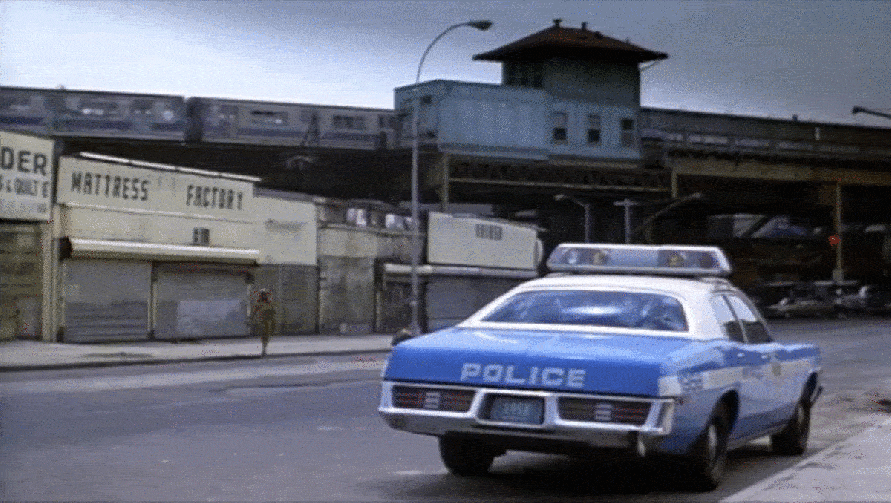
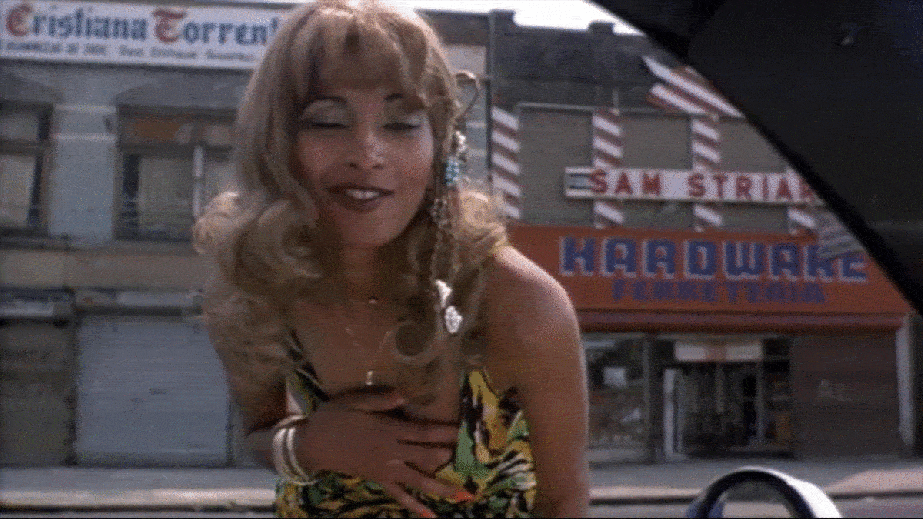
There wasn’t much information about Fort Apache, the Bronx’s filming locations on any of the traditional movie websites, so I had to figure out a lot of them on my own. I did have one unique source that helped me figure out a chunk of locations early in my research (which I discuss in more detail in the “Chasing a Purse–Snatcher” section below) but for this scene, I did it on my own.
One obvious clue to go on was the elevated train station seen the background, but the clue that really helped me figure out this location was the “Cristiana Torrente” sign that appears behind Pam Grier. After doing a Google search, I found information on a Bronx church named, “Iglesia Cristiana Torrente De Cedrón,” located at 1330 Louis Niñe Boulevard (called Wilkins Avenue at the time of filming). Even though the church name wasn’t exactly the same, it still looked promising since it was near a train station whose transit house on the elevated platform was similar to one in the film. However, since most of the buildings in the area had been replaced or drastically remodeled, it took me a little time to confirm that I found the right place.
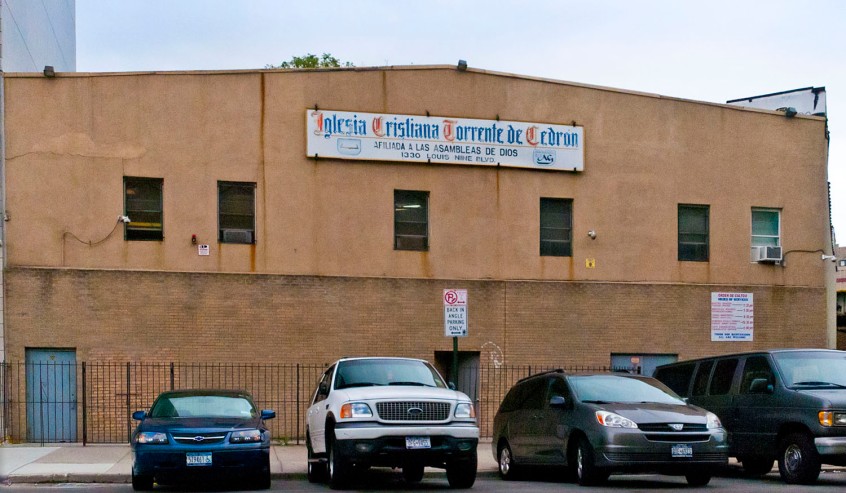
Normally, the first thing I do when I want to check out a street that has changed dramatically over the years, is consult the NYC municipal tax archives for old photographs. At the time I was researching this film, the 1940s tax pictures were not available online, but the ones from the 1980s were. And even though there wasn’t a picture of the church, there was one of the neighboring building at 1328 Louis Niñe Blvd, which matched the hardware store seen in the film.
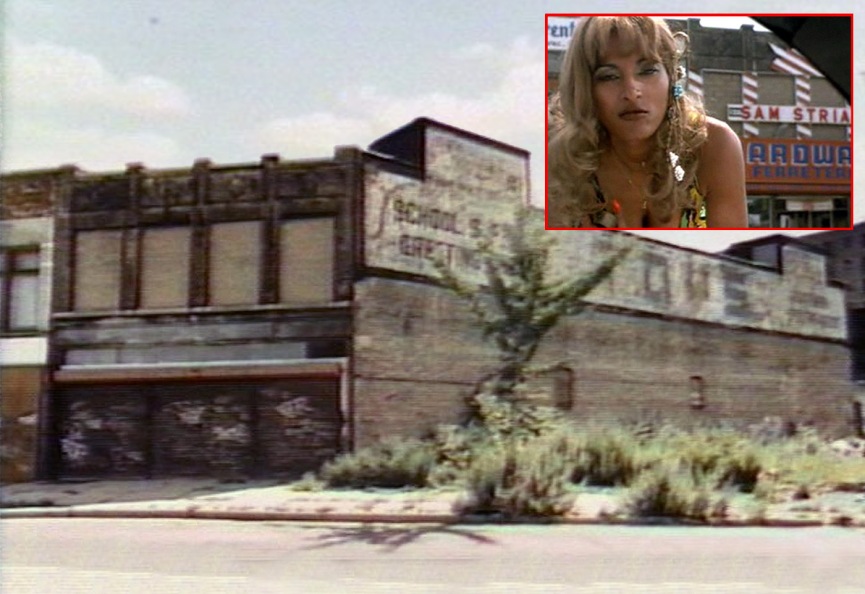
Unfortunately, the photographs of all the other neighboring lots on that block were unhelpful because at the time they were taken (circa 1983-1986), all the buildings had already been torn down. But the church, the El station, and that matching tax photo of no. 1328 convinced me I found the right place.
The Police Station

When I first began this “NYC in Film” project, one of the websites I often consulted was On the Set of New York, which sometimes had very detailed entries. However when I came to this movie, it only had one location listed, and that was for this police station. And after checking out the location in person, I could tell that the website gave a correct address.
Even though all of the exteriors were shot at the 42nd Precinct at 830 Washington Avenue, they called it the 41st Precinct in the movie because the screenplay was inspired by the experiences of real-life NYPD Detectives Tom Mulhearn and Pete Tessitore, who worked out of the 4-1 in the South Bronx during the 1960s. (Both of the detectives served as consultants for the film and were in charge of hiring off-duty cops to work on the set as the “Fort Apache Security Team,” or “FAST.”)

During the 60s and 70s, crime was on the rise, and many New York City cops saw these Bronx neighborhoods as a hostile territory. That’s basically how the the 41st station house came to be known as “Fort Apache,” named after an old U.S. cavalry outpost located on hostile Native American land in Arizona. According to detective Tessitore, the building’s nickname came one day after somebody from across the street shot arrows through the window into their third-floor locker room.
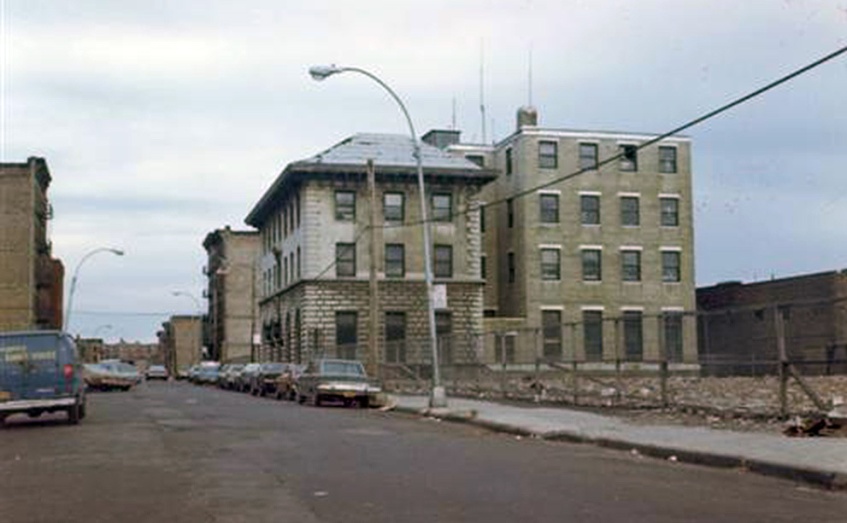
While all of the exteriors were shot at the 42nd precinct on Washington, a lot of the interiors were shot on sets at Kaufman Studios in Astoria, Queens. However, at least some of the interior scenes were shot inside what was the real 41st station house at that time, located at 1086 Simpson Street.
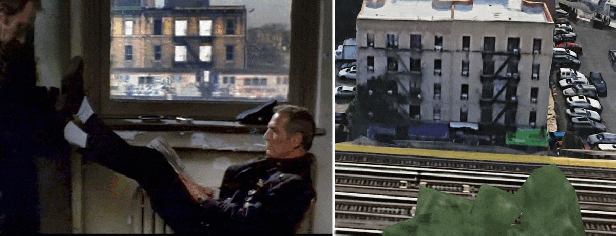
In 1993, the 4-1 moved out of the 100-plus-year-old building on Simpson Street and relocated to 1035 Longwood Avenue. After the 4-1 moved out, the building housed NYPD’s Bronx Narcotics Unit for a while, but it’s now the headquarters for the Bronx Detective Command.
Best known as “Fort Apache,” the 41st Precinct earned another nickname by the 1980s — “Little House on the Prairie.” They adopted this somewhat quaint sobriquet after about two-thirds of the precinct’s residents had fled elsewhere, leaving the dilapidated station house as one of the area’s few lone survivors.
At the time this movie was being filmed, the 41st police station was in bad shape, surrounded by strewn garbage and mostly empty lots. But today, it sits on a redeveloped, tree-lined residential street, without any indication of the desolation that occurred some 40 years ago.
Driving Up Third Avenue
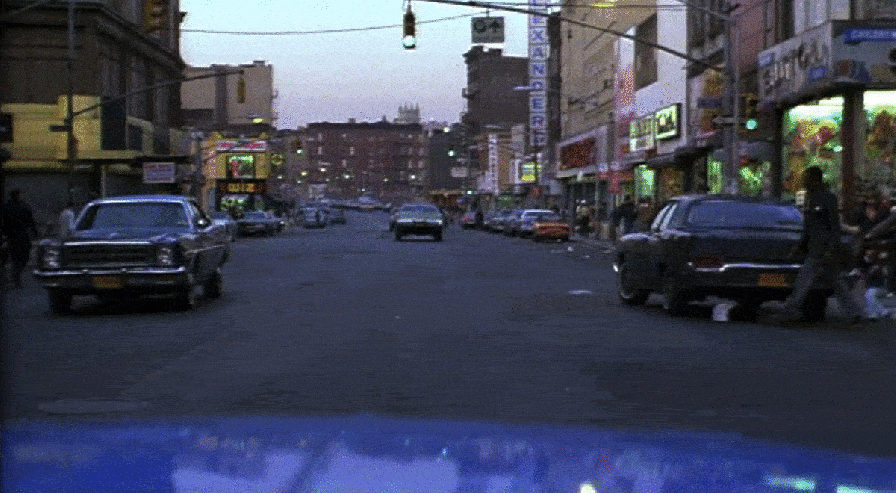
With blocks and blocks of retail stores, there were only so many streets in the South Bronx where this could have been filmed. At first, I considered Tremont Avenue or Fordham Road as possibilities, but eventually realized it was shot on Third Avenue, which happened to be close to where I’d bike on almost a daily basis.
Nicknamed “The Hub,” this part of Third Avenue is still a pretty busy shopping area with lots of discount shops on either side of the street.
Rooftop Jumper

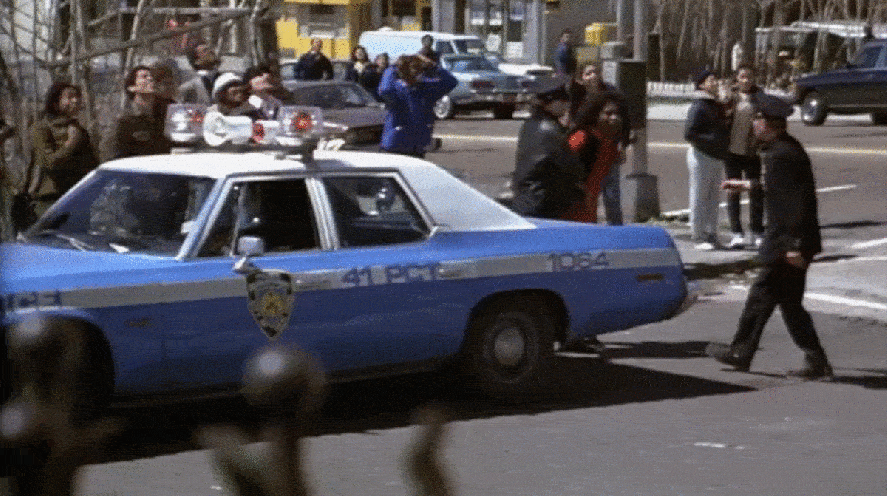
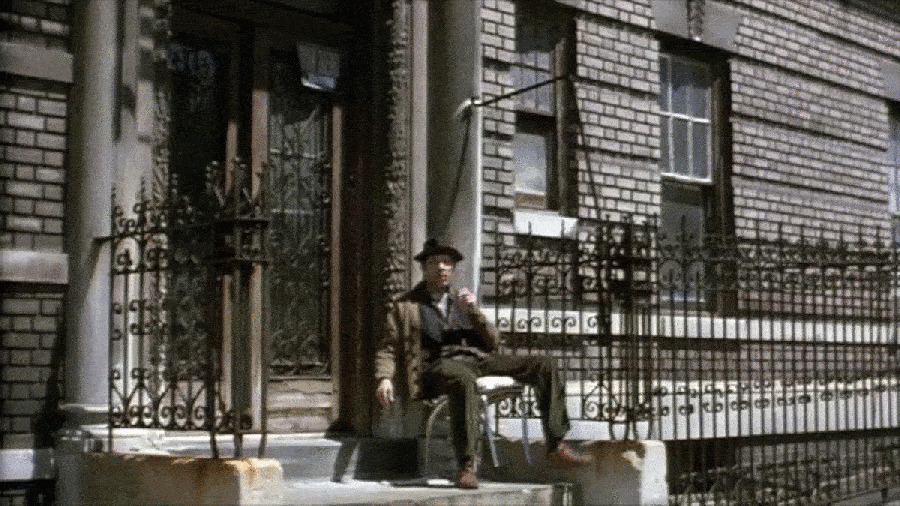
I figured out the location of this scene about halfway into my research of this film. By that point, I had realized that a lot of the locations used were within a few blocks of the police station on Washington Ave, and this location was another one.
When the camera tilted up towards the roof, I could tell that the corner of the building was slightly acute, implying that it was probably on the corner of an angled street. So from there, I just looked in the general vicinity of the police station for a non-squared intersection until I landed on E. 164th St. and Boston Road.
While the building has seen a few modifications —most notably the front entrance— it’s similar enough to what it looked like in 1980 that I was able to quickly confirm I found the right place.
Chasing a Purse–Snatcher
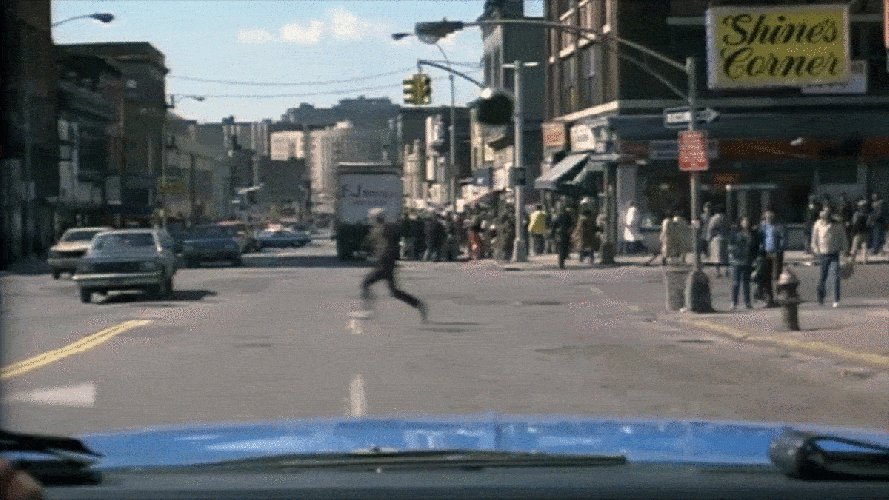
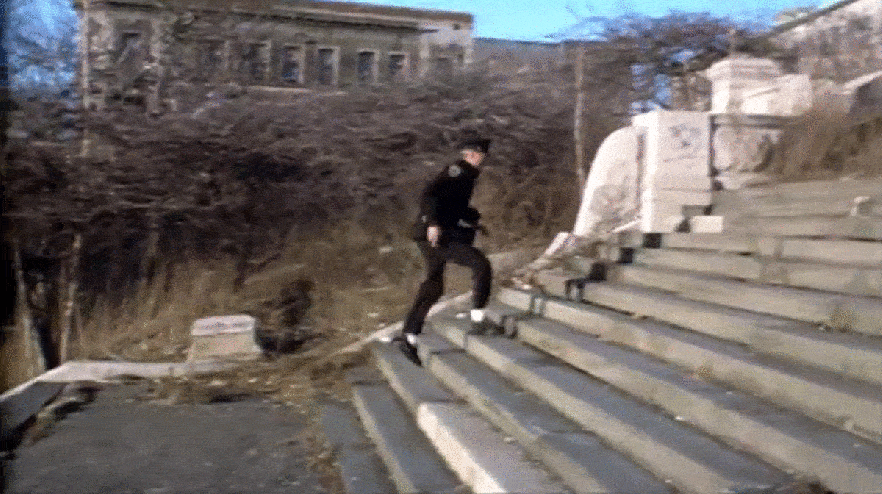
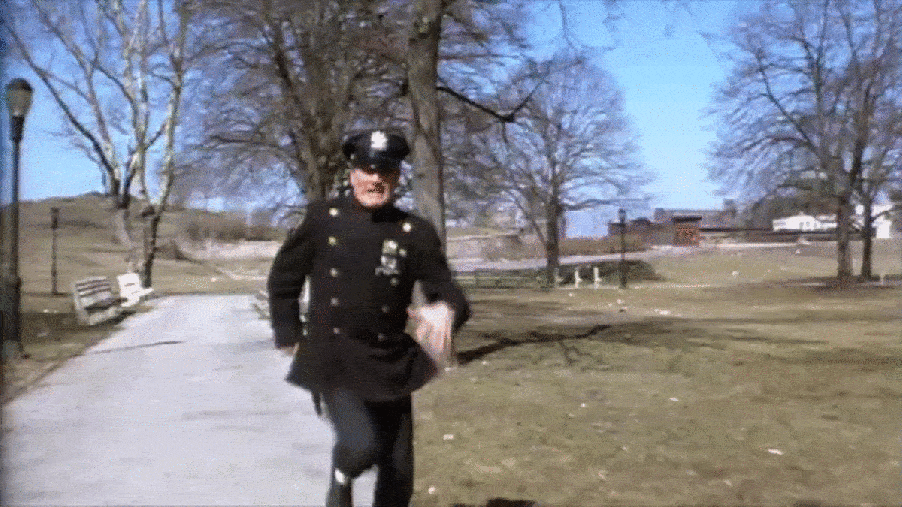
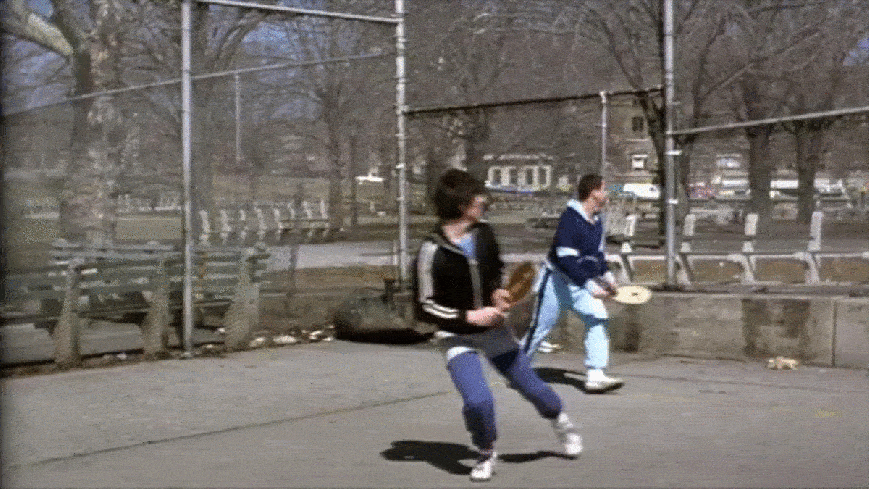
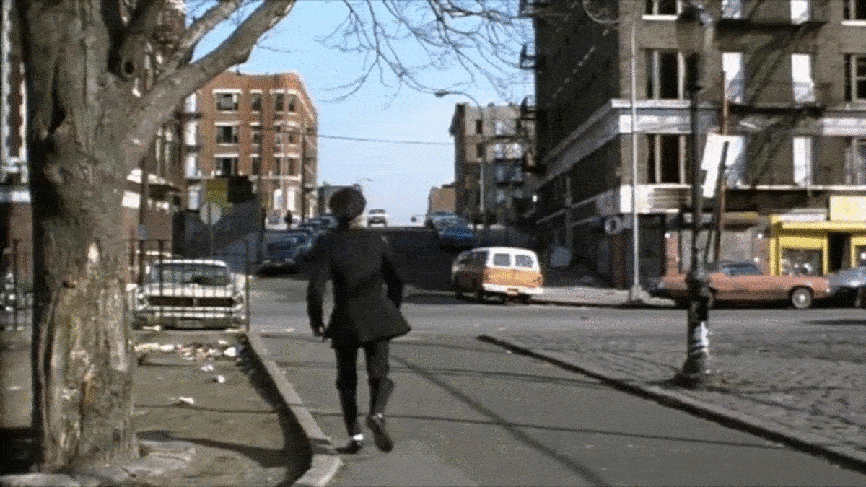
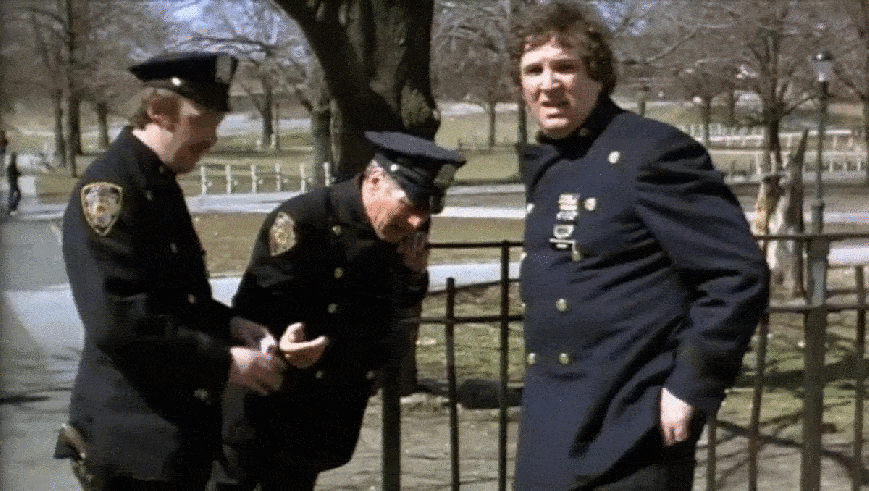
Back when I was first researching Fort Apache in 2016, the IMDb website still had a great feature — the message board. Pretty much every major motion picture had pages and pages of threads covering almost every topic you could imagine, sometimes offering some incredibly useful information.
That was the case with this film. In 2016, there was definitely less movie location information available on the web, but fortunately, on IMDb, there was a thread that was specifically about the locations used in Fort Apache, the Bronx. While a lot of people who chimed in were simply asking questions or making wild guesses on a scene’s whereabouts, one user had a myriad of specific information.
A former New York City cop in the Bronx, who later became a fireman, wrote on the message board in 2008 and listed some of the locations he was intimately familiar with, including the location of this chase sequence:
Certain scenes were filmed right in the area where I work. The scene where Paul Newman chases the perp with the WWI hat up the steps and across the park before losing him took place in Tremont Park. He runs up the steps of what used to be Bronx Borough Hall at the corner of Third Ave. and Tremont Avenue. When he loses the perp, and the other cops pull up and start breaking his balls while he has a cigarette, he’s standing on Arthur Avenue, at the corner of 176th St.
His details were spot on and I was able to confirm this location within minutes upon discovering his IMDb post.
While the park has changed quite a bit from the somewhat derelict state that it was in at the time of this filming, I was excited to find that several of the trees have survived over the years. The most noticeable carry-over is a tree next to the handball courts which looks just about the same today as it did in this scene (albeit, a little more knobby).
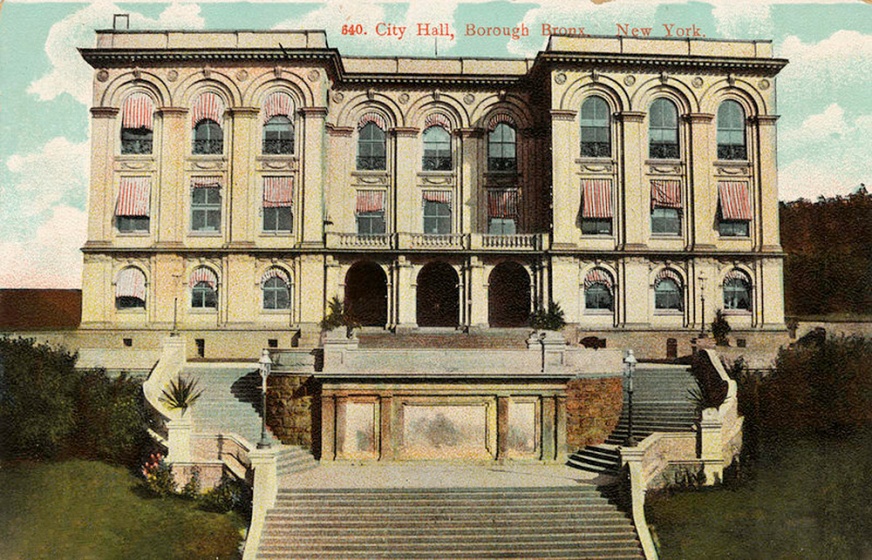
As indicated in the IMDb post, before becoming a stand-alone park, this rocky plateau was the former site of the Bronx Borough Hall, a building which originally acted as the administrative headquarters for Bronx’s civic leaders. Constructed in 1897 by George B. Post (who also designed the New York Stock Exchange), the Federal-Style hall stood near the corner of Tremont and Third Avenue for over 70 years. In 1969, the mostly-vacant building was finally demolished, despite receiving landmark status four years prior.
Today, all that remains from that original 19th century structure is the Grand Staircase that connects the elevated park to Third Avenue below. It’s also the same staircase that Paul Newman races up in pursuit of the purse-snatcher during this scene.
Caption Connolly Arrives
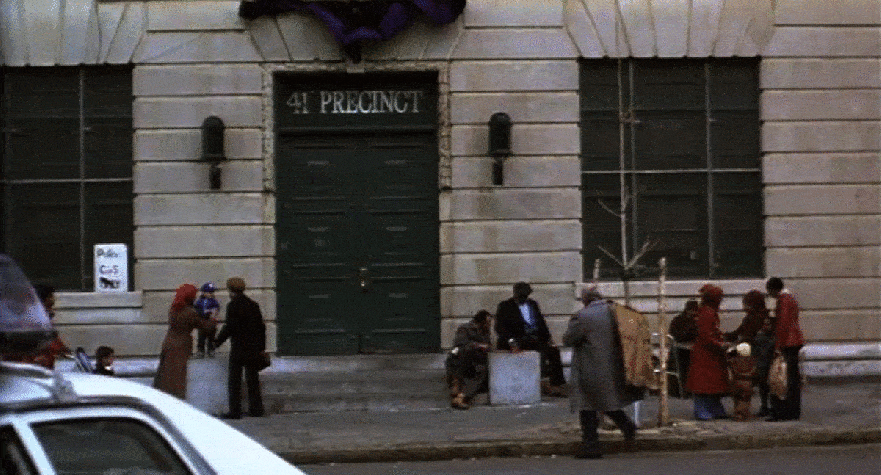
Even though this location was used more than any other in this film, I don’t have very many pictures of it.
As I mentioned in other posts, whenever I take a picture of a location, I do my best to have the frame cleared of as many people as possible to allow for a nice clean composition. When I went to Washington Avenue to take photos of the 42nd precinct, there was one uniformed officer outside the building who was talking to some guy in regular street clothes. After waiting around for a few minutes, the uniformed officer went inside and I asked the other guy if he could step away for a second while I took a picture of the front entrance.
Even though the guy obliged me, he was vocal in his confusion as to why I would be taking a picture of “his” police station. I didn’t think that he was actually a cop, but I did suspect that he was a “friend” of the force.
Because I detected a slight passive-aggressive tone in his query, I didn’t bother to give him a straight answer — namely, that I was taking pictures of a movie location for a website. Instead, I admittedly got a little defensive and said to him, “Why do you need to know why am taking a picture?”
He just shrugged and said, “I just think it’s very strange that you’re taking pictures of a police station.”
Because I didn’t really want to deal with the guy and his somewhat accusatory implications, I got out of there pretty quickly and ended up not taking as many pictures as I wanted to. In fact, I had to use a screenshot of a 2018 Google Street View for one of the “before/after” images of the “Angry Mob” scene (see below).
Confronting a Pimp

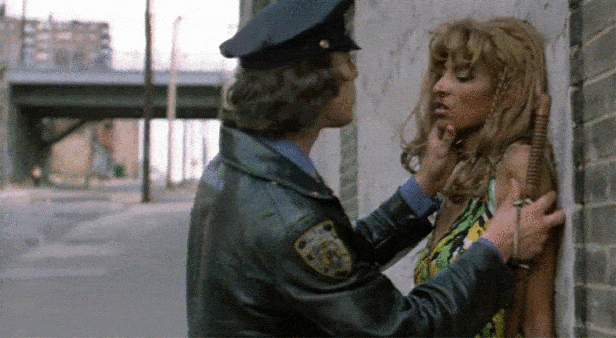
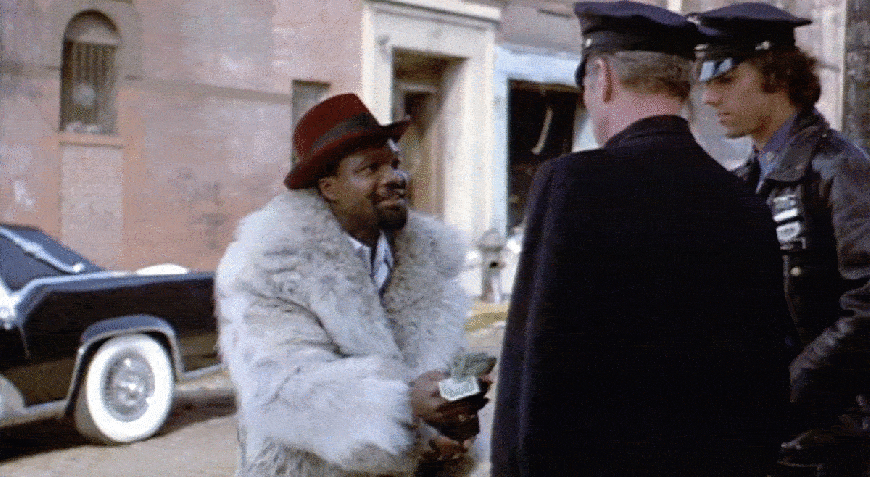
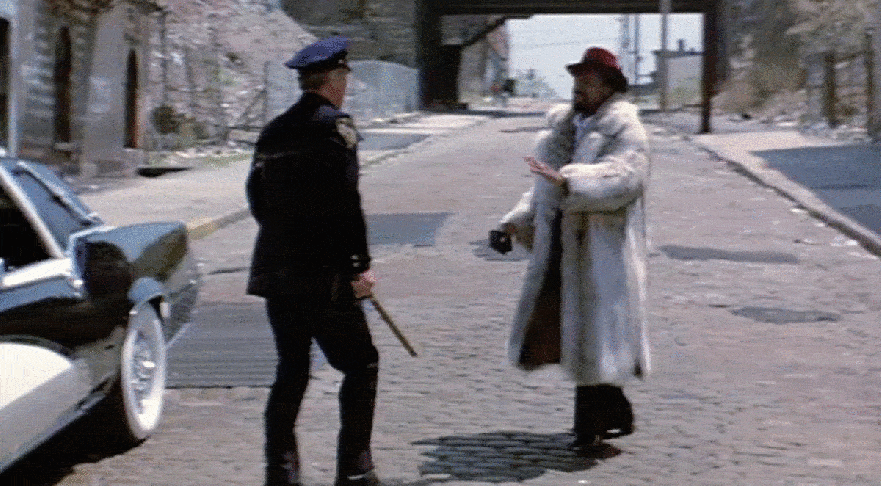
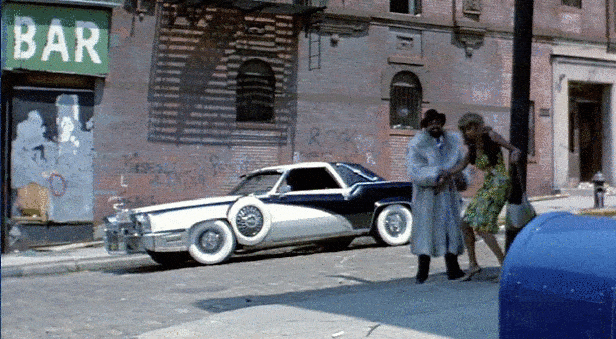
This is another location that was identified by that former NYPD officer who wrote on IMDb’s message board. Granted, I’m sure I would’ve figured out the locations he listed eventually, but considering I got this information in the early stages of my “NYC in Film” project when I was still a little inexperienced, it was extremely helpful in getting the ball rolling.
I definitely became saddened when the administrators of IMDb decided to discontinue the message boards. The logic behind it was that it was too time-consuming to monitor the threads, looking for rule violations and incendiary language.
But truth be told, most of the insults on IMDb never got much worse than accusing someone of being a philistine moviegoer, saying something like, “Go back to your superhero movies” or “Not enough exploding robot dinosaurs for you?” And looking back now, it’s rather funny thinking about how the folks running IMDb were that concerned about controlling civility on their website, considering the confrontational language that’s often used on places like Twitter, Facebook and YouTube.
It’s a shame IMDb couldn’t come up with another solution to the message board situation besides its complete termination. While the administrators claimed they were “no longer providing a positive, useful experience,.” I would contend that the vast majority of the threads were generally civil and sometimes extremely valuable. Case in point: the sharing of hard-to-find filming locations from Fort Apache.
Knife-Wielding Lunatic
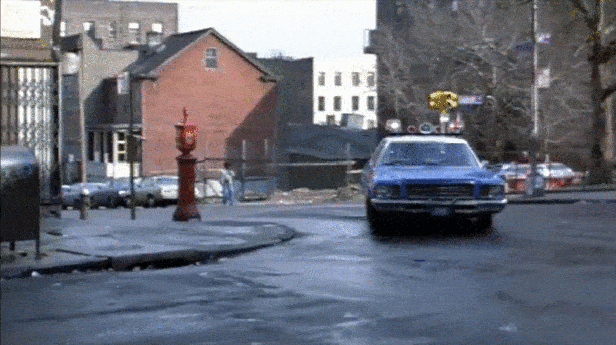
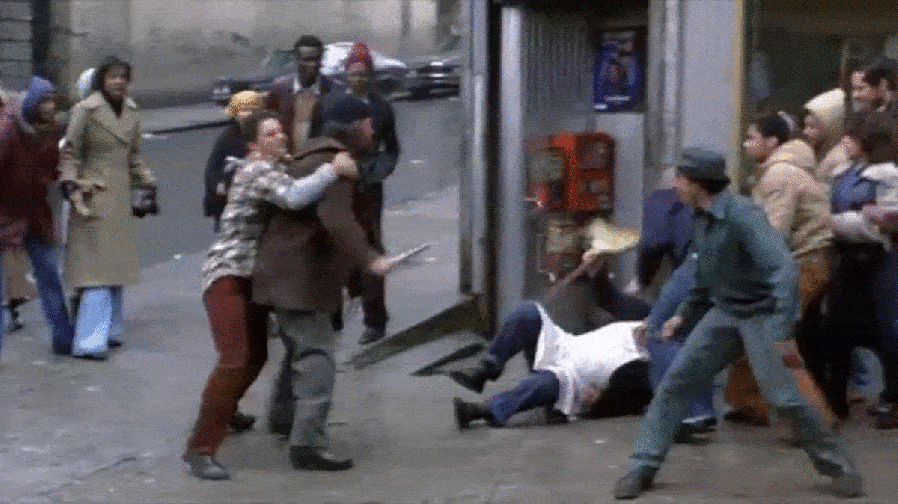
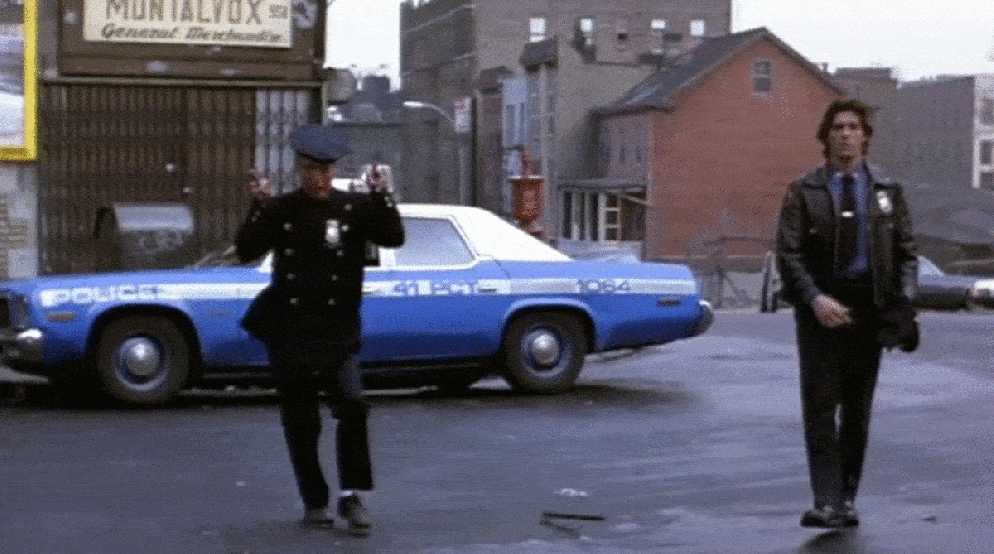
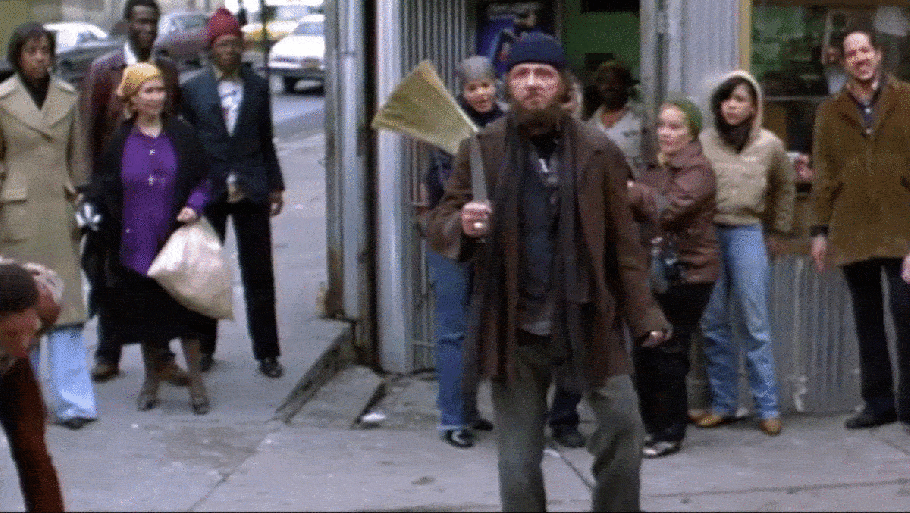
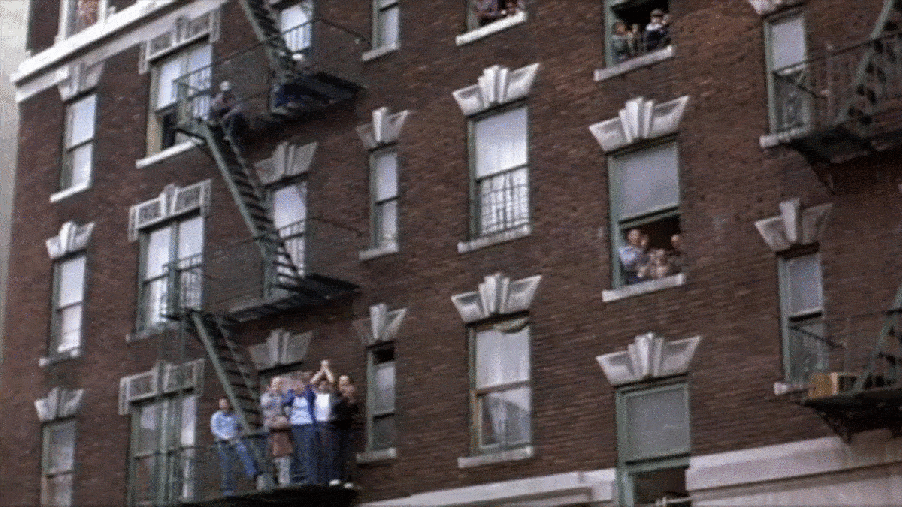
This was a location that wasn’t mentioned on the IMDb board and I had to find it on my own. It took me a while to figure it out, mostly because it ended up being a little bit further away from the 42nd police station than a lot of the other filming locations.
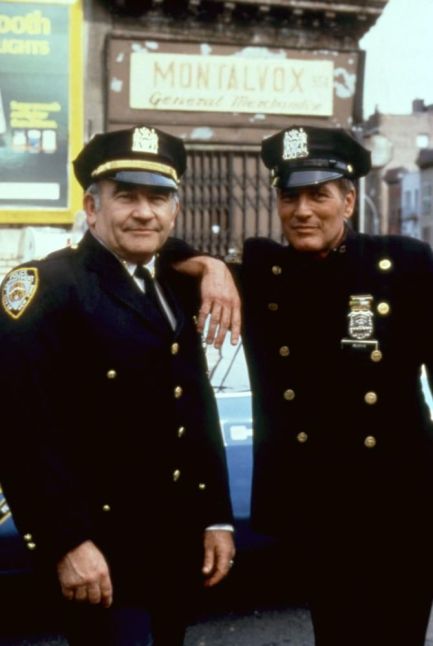
My first tactic was to focus on the general merchandise store that appeared behind Paul Newman that had a sign that said, “Montalvox.” However, after looking through a 1980 Bronx phonebook at the public library, I couldn’t find anything under that unusual Spanish name (as I suspected).
With the store being of no help, the next big clue I worked from was the hill the cop car drove up. While this part of NYC can be hilly at some places, there are only so many hills in the South Bronx with that steep of an incline. And whenever I would find a spot that looked promising, I would look for the building that appeared at the end of this scene where local residents cheered from their windows. My hope was that that building would still be around today.
In the end, it was pure perseverance that led me to this filming location. Slowly but surely, I made my way to Clay Avenue and was able to match up the building at the end of the scene, which I later realized was the same building that had the mysterious “Montalvox” store in its ground floor.
Once I confirmed this filming location, I was amused (or maybe it was more embittered) to find out that it was literally 400 feet from Webster Avenue, which was my main biking route to and from Manhattan for over five years. I probably glanced up that hill looking for oncoming cars hundreds of times.
A Pregnant Woman
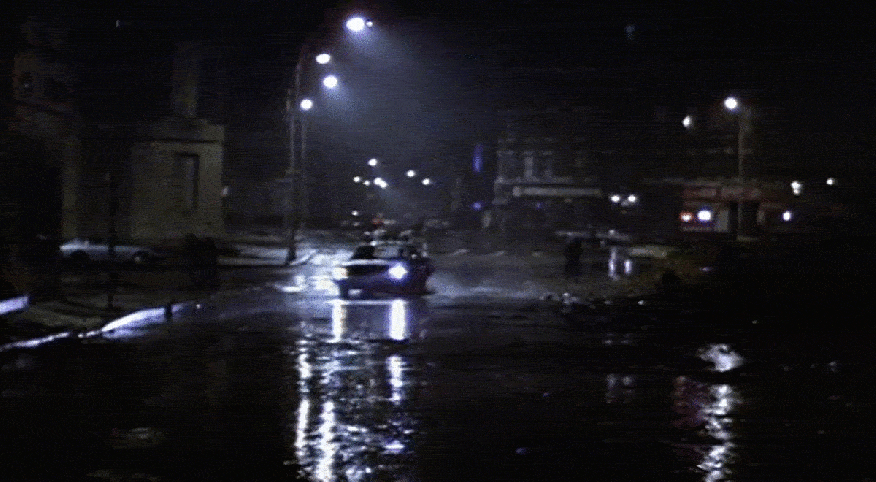
After researching this film off and on for a couple years, I was able to find every location from this film, except for three (which included this one). These three missing locations vexed me for the longest time. I really just hit a wall and it wasn’t until very recently that I was able to finally break through.
Whenever I get stumped with a filming location, I will usually throw it up on my missing page and see if Blakeslee or anyone else can help. But a lot of times, I just let it sit for a while, and sometimes during this interim, I will suddenly get an inspiration to approach the problem from a different angle that ends up helping me solve the mystery. But frankly, other times, I just lose interest and slowly accept that some movies will simply have an incomplete list of filming locations, especially if the missing location is for an insignificant scene or from a lesser title.
Even though I don’t think Fort Apache is the best film in the world, it left an impact on me growing up, and I tend to be especially motivated to find Bronx locations since not many movies were filmed up there. So, even after going a couple years without solving these last three vexing locations, I always had them on the back-burner and never lost the inclination to find them.
Then, after finding one of the three locations a few months ago (see the “Driving Isabella Home” scene below), I felt invigorated to find the other two.
When it came to this scene, the first thing I focused on was the intersection. Even though it was dark and rainy, it appeared rather large. As far as I could tell, it looked like it was a five- or six-way intersection, and since something like that is not incredibly common, I thought I would be able to pinpoint it fairly quickly just by looking through a map of the Bronx.
However, after looking at every intersection in the South Bronx that had more than four joining streets, I came up empty. I even expanded my search to parts of the Bronx that were nowhere near any of the other confirmed filming locations, but to no avail. And every couple months or so, I would think that maybe I missed a potential intersection, and re-check the map. I even looked in Manhattan and parts of Brooklyn out of sheer desperation.
Of course, one extra hiccup that came with looking in the South Bronx was that many intersections had buildings that were erected post-1981, so I would have to constantly go digging through old tax photos to see what used to be there.
After numerous fails, I started thinking that maybe it was a four-way intersection with a very wide street that had a median strip, giving the illusion that it was two different streets. If that was the case, I needed to find a different strategy, and that’s when I decided to focus more on the narrow building on the left side of the frame which had a triangular shape.
Right around this time, Blakeslee clued me in to the fact that in NYC, most of the corner buildings have a lot number of “1.” So I thought if I searched the municipal tax archives for all Bronx buildings with a “1” lot number, I might stumble upon that triangular-looking building (which was clearly on a corner). While it seemed like a clever idea, it didn’t net me any results. One reason is that the tax archives are a little incomplete when it comes to the Bronx, and also, not every corner lot is necessarily numbered 1.
Finally, over four years after I started researching this film, this location was solved by really dumb luck.
While looking through the 1940s tax archives of the Bronx for an unrelated location, I kept an eye open for that triangular building, as well as the large apartment buildings that appeared in the background on the far side of the intersection. While not super unique, they did have a certain look with specific window patterns (one that I practically had engraved on my brain), and I thought that maybe it would stand-out while searching through the archives.
Fortunately, out of the tens of thousands of potential images I had to look through, I came across a winner only about an eighth of the way into my search.

After I was certain that I found a match, I was able to track down a 1980s tax photo of that corner triangular building, which turns out used to be a Bronx courthouse. And to my surprise, it was torn down as recently as 2008 to make away for a Boricua College building. Needless to say, none of the other buildings from the scene have survived either — everything in that area today is new. (In fact, only a couple years after this movie was made, when the 1980s tax photos were taken, most of the lots were already empty.)
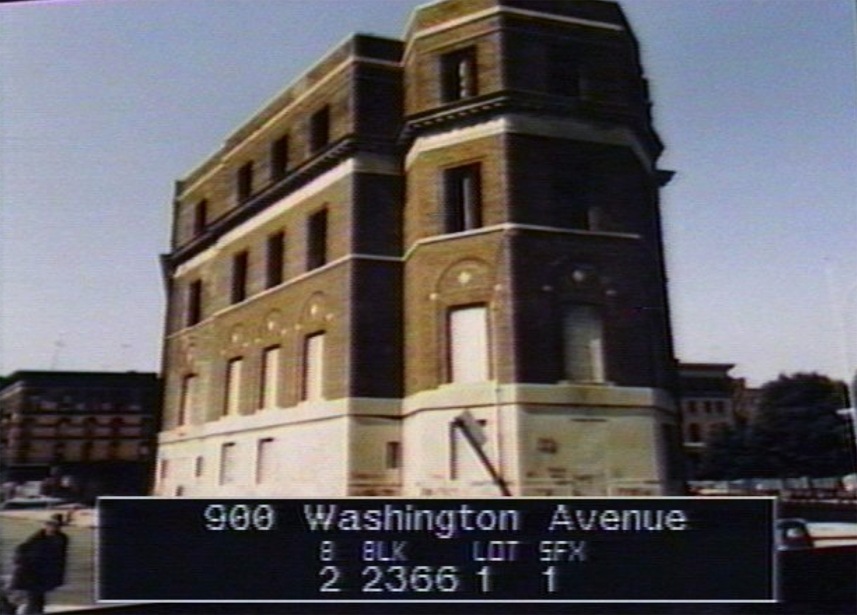
Once I confirmed this filming location, I felt kind of stupid that it took me so long to find it. One reason is that it’s literally two blocks away from the 42nd precinct station house. Another reason is that I actually looked at this spot at the beginning of my search, but ended up rejecting it. I’m not exactly sure why. I guess I got thrown off because the intersection had changed a bit over the years — it sort of looks like an open plaza today.
However, after looking at some old maps, I could see that this spot used to be a seven- or eight-way intersection. At some point after this movie was made, one of the joining streets got eliminated, and another street (the one the police car parks on) got converted into a pedestrian walkway.
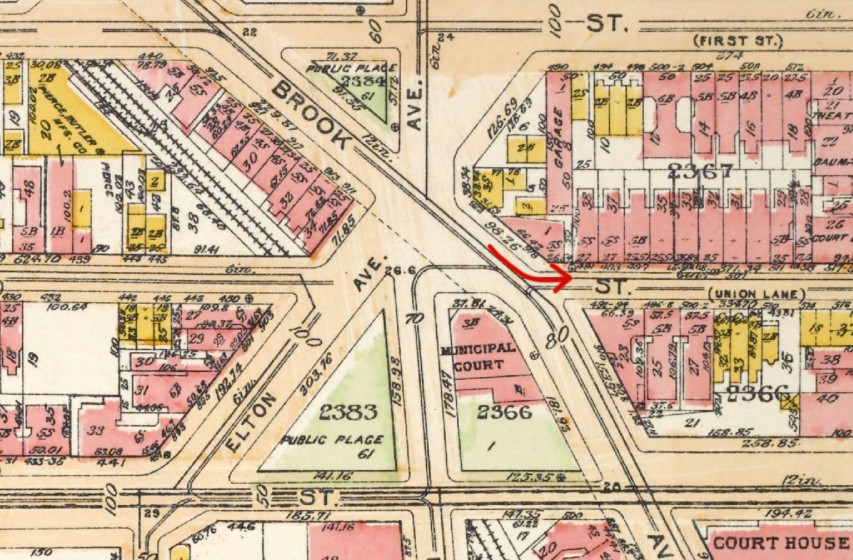
It still baffles me that I didn’t explore this spot a little more closely when I first started this search, especially considering how close it is to the police station. I do remember when I initially investigated this location, I took the time to try and look at this intersection in Google Street View at the oldest setting possible. (Google allows you to look at street views as far back as 2007, but these older views can be a little spotty; as was the case with this location )
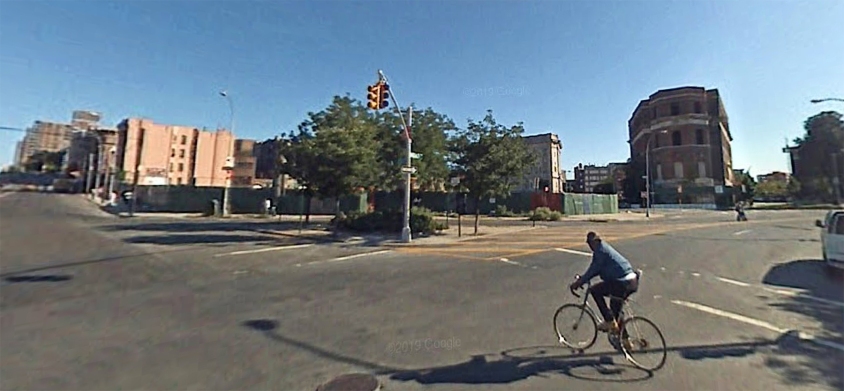
While Google Street View didn’t have any 2007 options on the actual street used in this scene, a few of the outlying streets did have that option, and it showed that triangular Courthouse in the distance. I’m guessing that if Google had 2007 viewing options closer to the intersection used in this scene, I might have solved this mystery years sooner.
Hospital
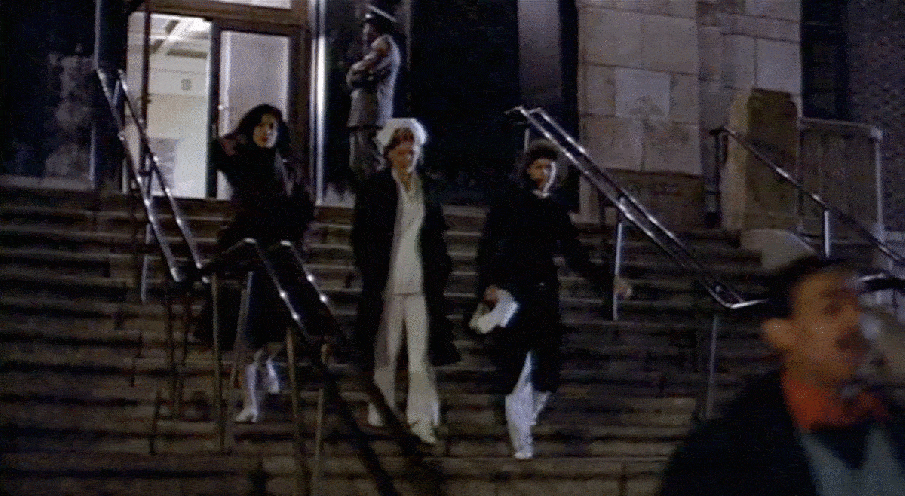
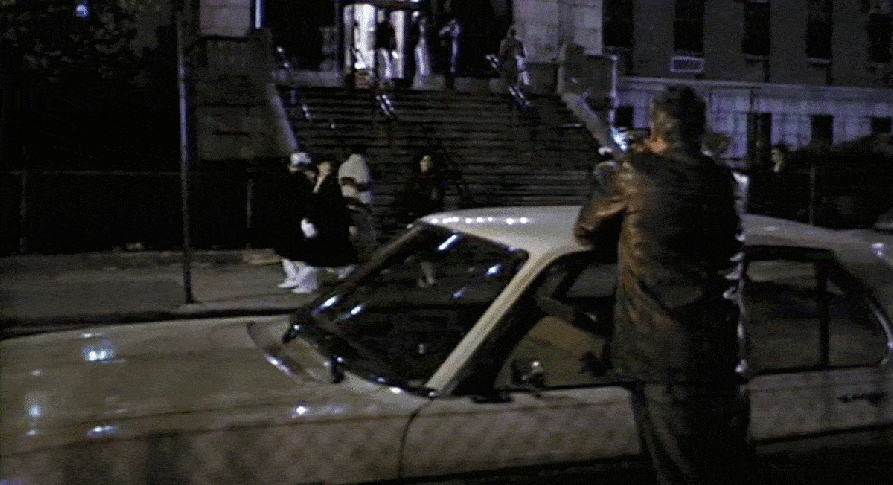
This was found simply by searching for all the hospitals in the Bronx. Through the process of elimination, I was able to figure out that the Bronx-Lebanon Hospital Center on Fulton was the one used in this film.
When this hospital was built on the former Eichler estate on Fulton Avenue in the 1920s, it was for a local medical facility simply called the Bronx Hospital. Founded in 1911, the philanthropic institution was created to serve the growing community in the South Bronx, which at the time, was mostly Jewish.
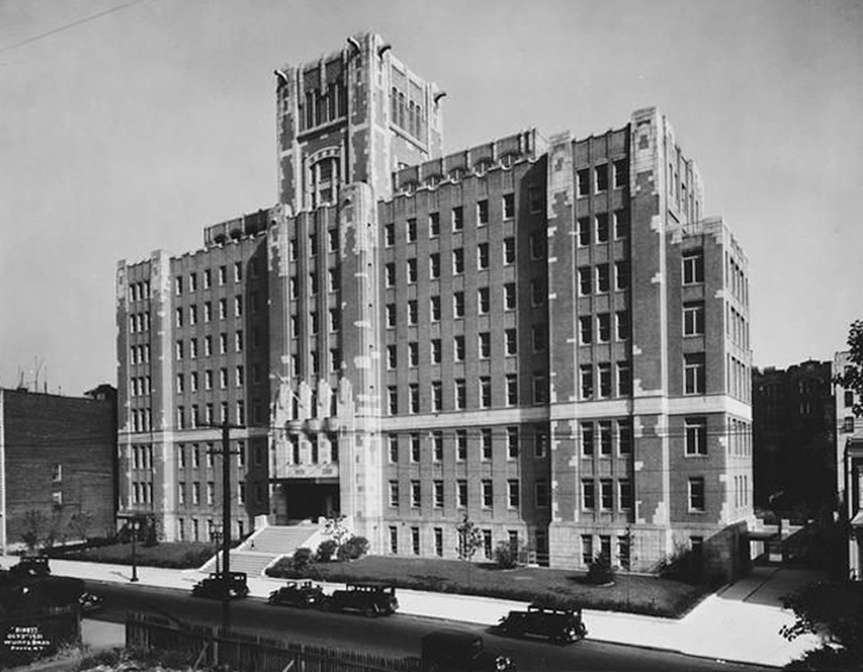
In 1962, the Bronx Hospital merged with the nearby Lebanon Hospital on Grand Concourse to create a more comprehensive medical center. After the merger, it was decided that instead of moving into one new location, the hospitals would remain in both of their original buildings.
In the 1980s, as the community’s demographics was changing and Medicare was becoming more widely available, the Jewish philanthropic organization that helped fund the hospital dropped out and Bronx-Lebanon Hospital Center became a private institution. Today, the Fulton Avenue location functions primarily as a psychiatric and substance abuse clinic with a 240-bed skilled nursing facility.
Cop Bar
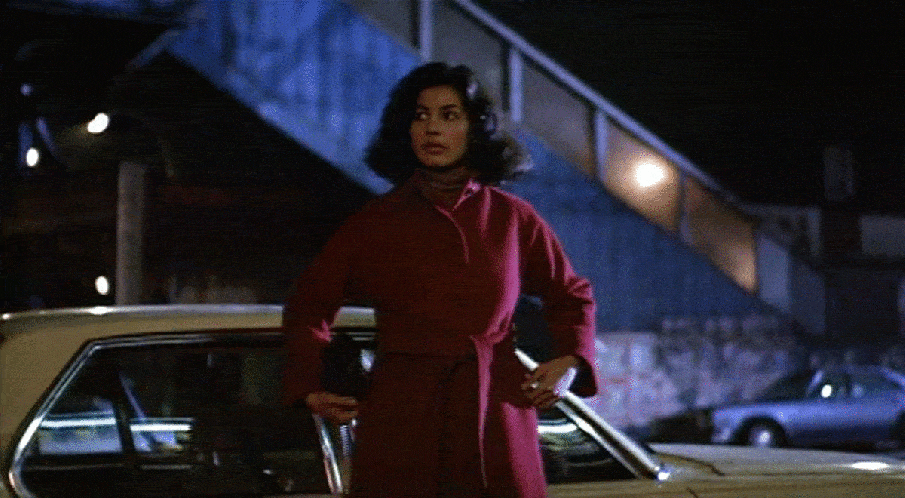

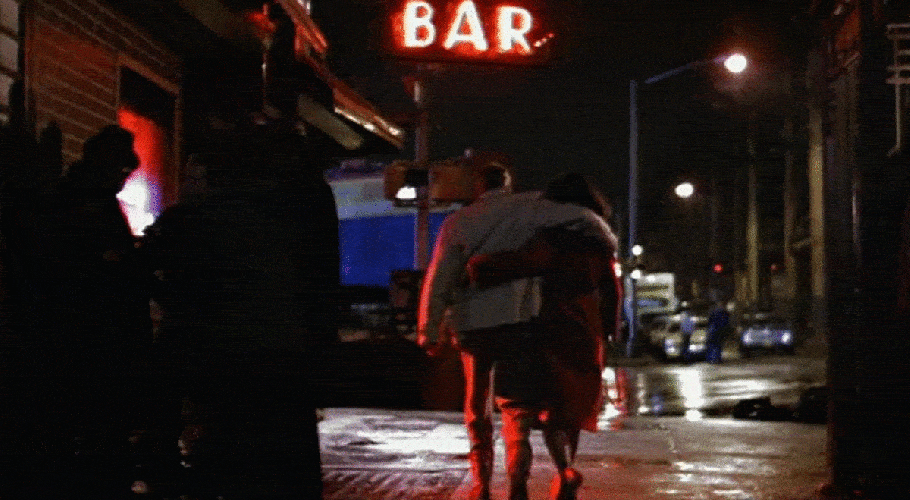
I identified this filming location by stumbling onto an online discussion board called Thee RANT where “New York City Cops speak their minds.” In one of the forums from 2009, in between gripes about how much Fort Apache, the Bronx “sucked” and how much today’s cops are “cry babies,” someone mentioned a place called Valencia Bar on Westchester Ave which was supposedly used in the film.
When I researched the name of the bar, I couldn’t find very much online, except that it was on the corner of Westchester and Intervale. When I went to that corner, I could see that it was next to an elevated train station, which helped make the case that I found the correct location since there’s an El station in these bar scenes as well. However, most of the area had been modernized, which included a new building on the corner where this cop bar supposedly used to be.
When I looked up the intersection in the 1940s tax archives, I couldn’t find anything that matched the film. But after going through the 1980s tax photos, I found a building that matched the one seen across the street from the bar, confirming that I had found the correct location.

Corelli’s Girlfriend’s Home
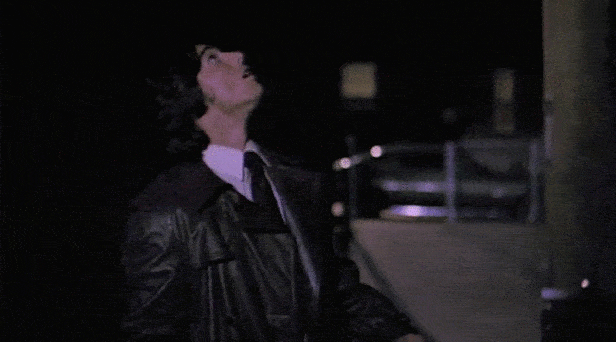
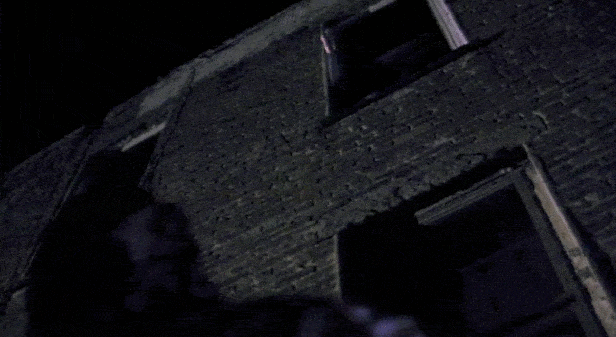
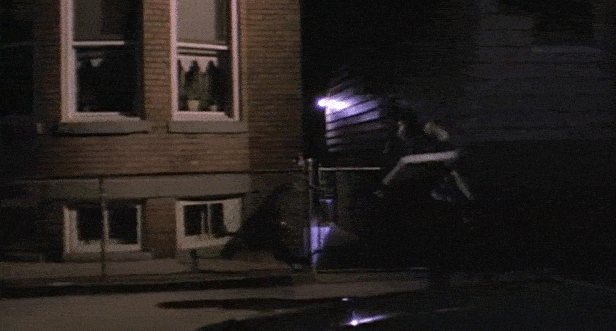
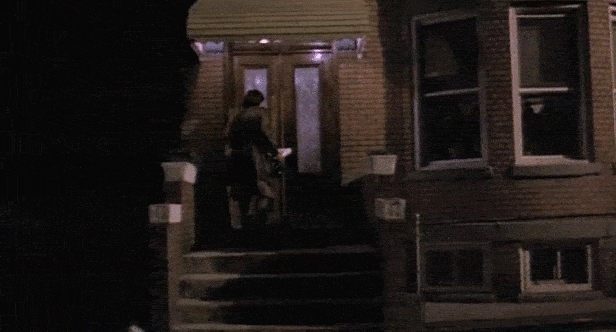
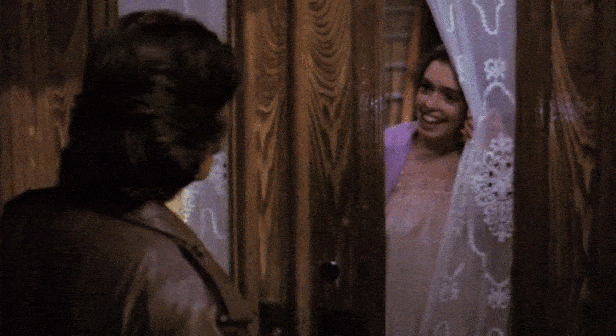
This is another one of the three missing locations that bemused me for several years, and was the very last one to be solved.
Blakeslee and I were both separately working on trying to figure this out, and it seems as though we were both using the same basic strategy in our search, however, he proceeded more quickly than me.
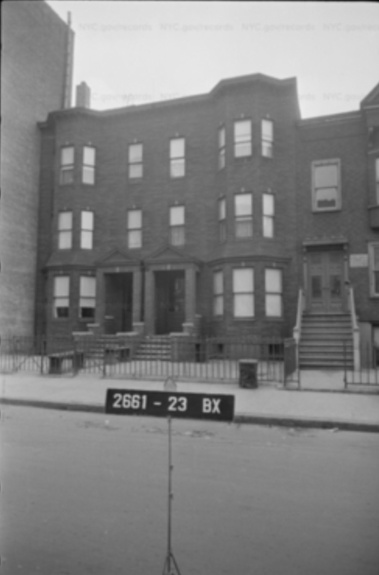
First thing I did on my end was search through the streets of South Bronx in Google Street View, looking for a single-home with a triple-pane bay window on the right and a small stoop on the left. But after a while, I realized that this method was too time-consuming. (I also tried looking through old photos in the 1940’s tax archives, but that was time-sucking as well.)
That’s when I realized that Google had since enhanced its maps. They now show more accurate outlines of the buildings (and have address numbers inside the shapes). With this enhanced imagery, I was able to look at overview maps of a series of blocks and be able tell what the general shape of the buildings were. In this case, I was looking for fairly narrow buildings with a curved front where the bay window would be, and a small alley on its right side.
While this method was more efficient, I was not having any luck finding this location. That’s when I considered the possibility that they shot this scene in Queens. The main reason is that there are generally a lot more buildings with that kind of curved facade in Queens than in the Bronx.
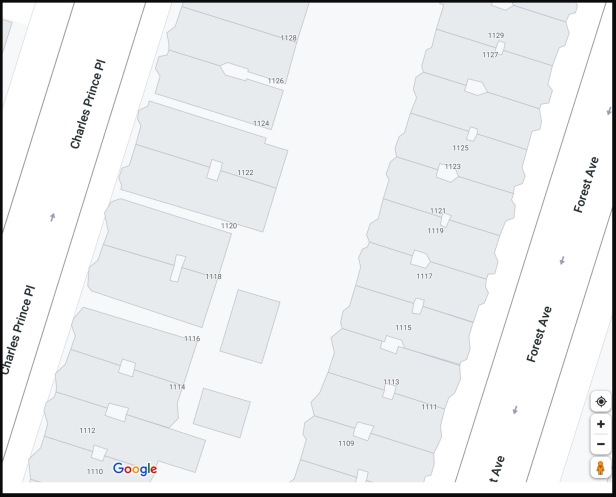
With the dauntingly-large Queens being added to the mix, my search started slowing down, especially since I was still on the hunt for the other two missing locations at the time.
That’s when Blakeslee took the lead, and began looking through Queens, using a key piece of information to better hone his search. Knowing that production built some interior sets at Kaufman Studios in Astoria, Queens, Blakeslee decided to limit his search to that neighborhood. I actually had the same idea but never followed through with it.
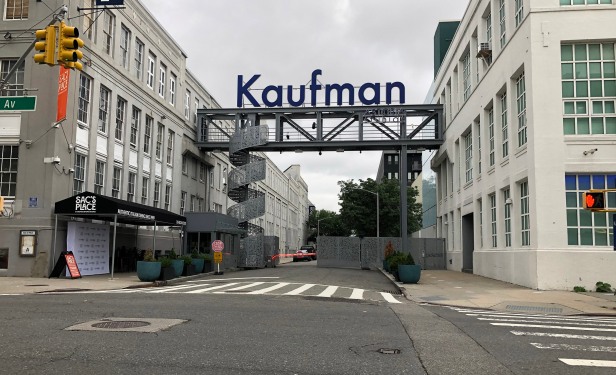
Thankfully, Blakeslee did follow through with this idea and hit the jackpot fairly quickly. I remember he sent me a text one night with a pic of a home in Astoria that was similar-looking, but not the one from the film. Then, the next morning, I got another text; this time with the proper address of the building used in this film, which was only one block away from Kaufman-Astoria Studios.
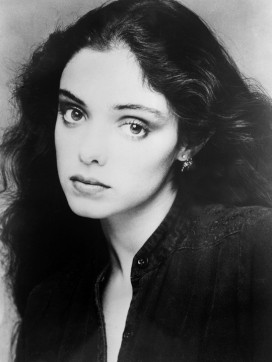
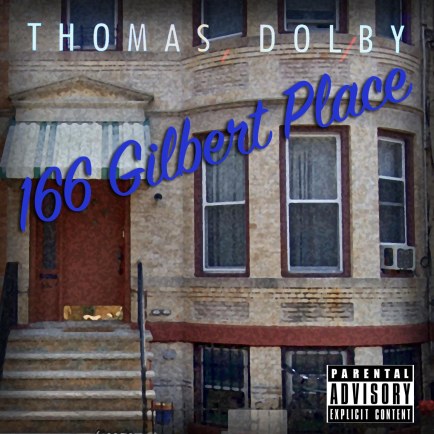 One reason Blakeslee and I enjoy searching for old movie locations is that sometimes it leads us to fun historical facts or interesting trivia, and while looking for this location, Blakeslee stumbled upon a little bit of trivia about the actress, Kathleen Beller, who played Corelli’s girlfriend in this scene. Even though it was no help in finding this location, he decided one day to check out Beller’s bio and was surprised to discover that she was married to new wave musician, Thomas Dolby — probably best known for his 1982 hit, “She Blinded Me with Science.”
One reason Blakeslee and I enjoy searching for old movie locations is that sometimes it leads us to fun historical facts or interesting trivia, and while looking for this location, Blakeslee stumbled upon a little bit of trivia about the actress, Kathleen Beller, who played Corelli’s girlfriend in this scene. Even though it was no help in finding this location, he decided one day to check out Beller’s bio and was surprised to discover that she was married to new wave musician, Thomas Dolby — probably best known for his 1982 hit, “She Blinded Me with Science.”
Shortly after Blakeslee shared that little bit of trivia with me, he joked that he found one of Thomas Dolby’s later albums that was inexplicably named after the address from this scene (perhaps as some sort of cryptic dedication to his wife). That, in turn, inspired me to make a fake album cover for Blakeslee’s (but mostly my) amusement. Of course, since this was before we discovered the real location, the name and photo were of some random, similar-looking building I found during my search.
Driving Isabella Home
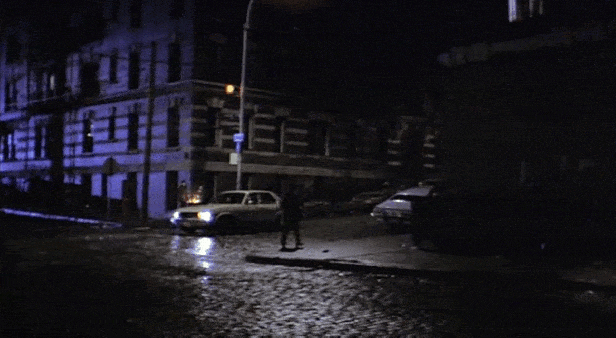

This is the last of those three vexing missing locations, but was the first to be actually identified.
After not having any luck finding the three remaining missing locations, I became determined to become a little more systematic in my hunt. Since the Bronx’s streets are laid-out in a sort of haphazard manner, unlike Manhattan’s orderly grid system with numbered streets, I was suspicious that I had covered the same ground multiple times in my search for these missing locations.
 That’s when I decided to save a custom map of the South Bronx and mark off each street once it’s been explored and ruled out. It ended up being a rather slow process, since I was looking for different things from each of the three different scenes. For example, in this scene, I was looking for a couple specific buildings near an intersection that had two of its streets going up a hill. And whenever I encountered an intersection that had similar looking hills but with modern buildings, I would mark my custom map with a red dot, telling me I needed to check out the intersection in the 1940s tax archives.
That’s when I decided to save a custom map of the South Bronx and mark off each street once it’s been explored and ruled out. It ended up being a rather slow process, since I was looking for different things from each of the three different scenes. For example, in this scene, I was looking for a couple specific buildings near an intersection that had two of its streets going up a hill. And whenever I encountered an intersection that had similar looking hills but with modern buildings, I would mark my custom map with a red dot, telling me I needed to check out the intersection in the 1940s tax archives.
Amazingly, this methodical survey of the South Bronx ended up working, and through the process of elimination, i eventually narrowed in on Waterloo Place. Not surprisingly, it was only a couple blocks away from another location used in this film.
One strange thing about this scene is that it’s implied that they’re parked in front of Isabella’s apartment building, but in another scene towards the end of the film, she is seen exiting a completely different building, far away from this location. (I talk more about this in the “Isabella Overdoses” section below.)
Flat Tire

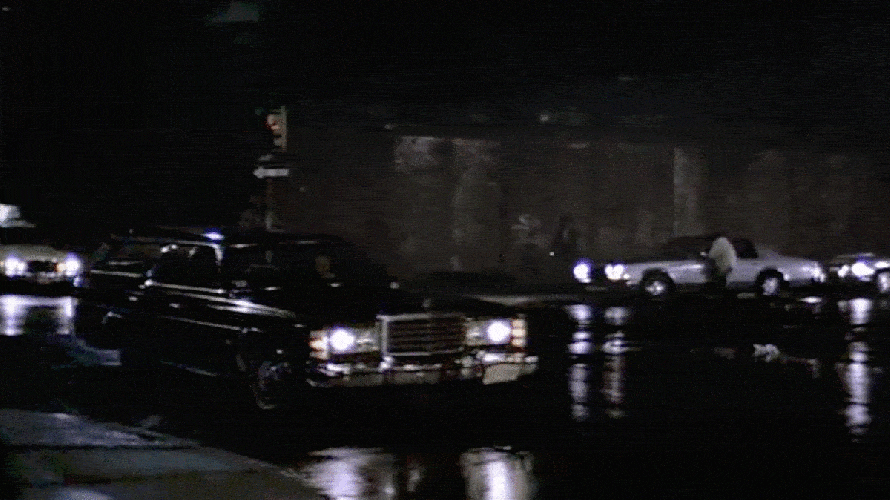
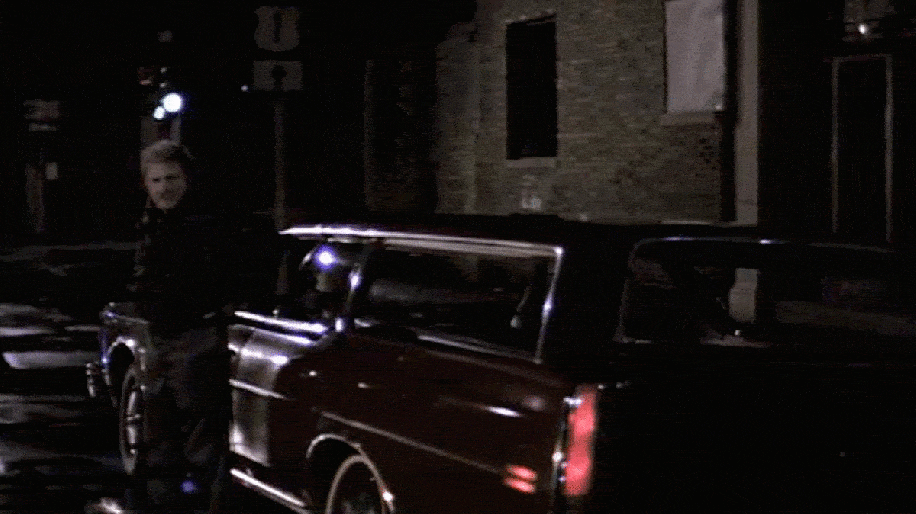
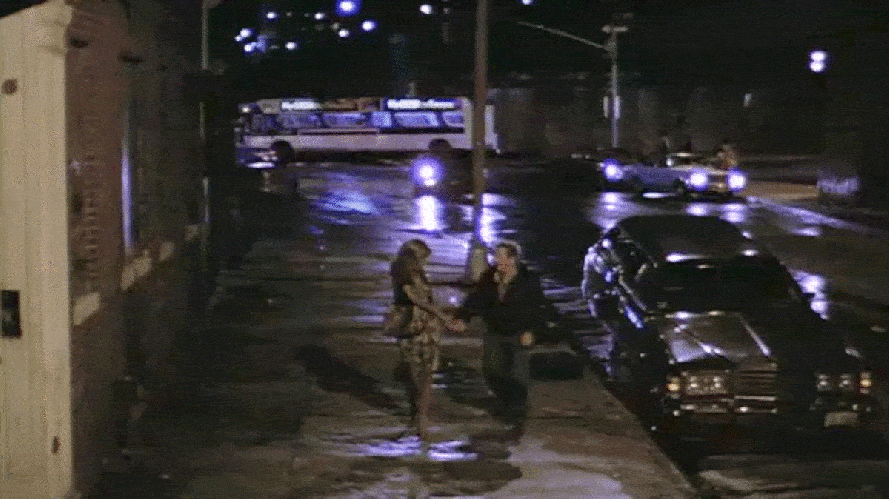
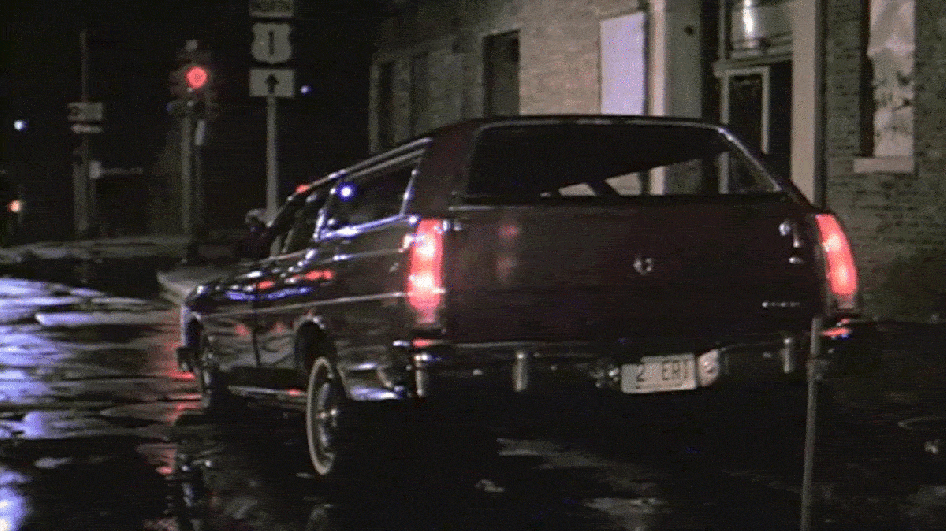
When I was a kid, my mom and stepdad went to go see this movie in the theater on one of their rare “date nights.” When they came back, I remember them being sort of disappointed by what they thought was unnecessarily excessive violence in the film. In particular, I remember them discussing this scene, which by their descriptions, sounded horrifying to me. My vision of what took place in the scene stuck with me for several years. When I finally saw the film on cable as a young teenager, this scene wasn’t nearly as disturbing as I thought it was going to be, but it was still memorable. So needless to say, when I decided to research this film, this scene’s location was one of the first I was interested in finding.
Fortunately, this turned out to be another location that was identified on that IMDb message board:
The scene where Pam Grier takes the stranded motorist who’s changing his tire into the vacant building and kills him was filmed on 175th St. and Third Ave., underneath the Cross Bronx Expressway. The vacant building that she kills him in has since been rehabbed, and is now the Cross Bronx Motel.
When I read that, I quickly checked out the location in Google Street View, but wasn’t immediately convinced that it was correct. While the building on 175th and Third has a construction date of 1925, I thought the facade looked nothing like the film. In particular, the windows looked all wrong.
But after going to the building in person, I could see that the windows were actually modified. For some reason, several of the ground-floor windows got filled in with bricks, and a couple others got partially filled in. And because it was done in sort of a slapdash way, I was still able to make out the old window pattern, which perfectly matched what appeared in this scene.
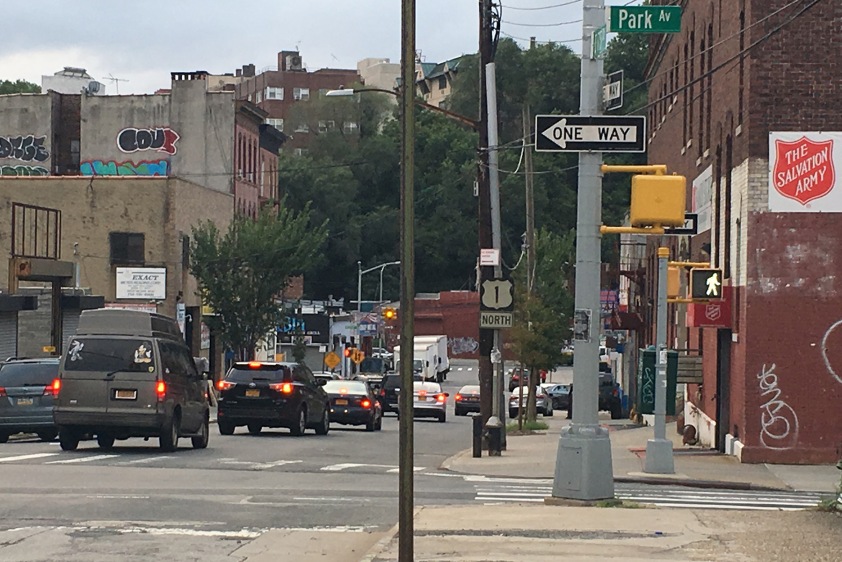
Also, the fact that the location given on the IMDb message board was next to an elevated highway and had signs directing traffic along Route 1 (both of which appear in the scene) helped convince me that it was, indeed, the correct place.
I never should’ve doubted my IMDb source.
Rounding Up Drug Dealers
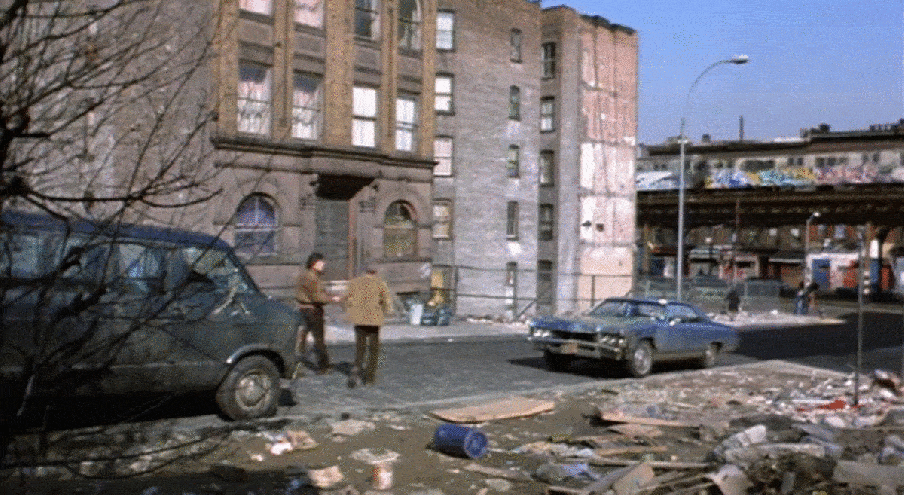
I found this location with a little help from an unofficial behind-the-scenes photograph taken on the street by a young Bronx resident.
Obviously, the clue I first started with was the elevated train that ran above the far street. But after looking at practically every street that crossed an elevated subway line in the South Bronx, I came up empty. Part of the problem was that many of the buildings in this part of the Bronx have been torn down since 1980, and unfortunately, I often had trouble finding old tax photos of the places I was investigating to see what buildings used to be there.
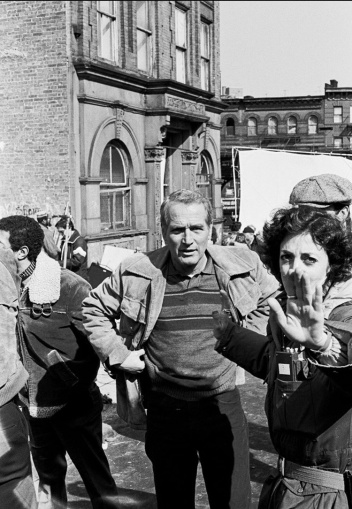
That’s when I stumbled upon a potentially helpful photograph while searching through Google images. It was a candid shot of Paul Newman on a street somewhere, taken by a photographer named Joe Conzo, Jr. Upon closer inspection of the photo, I discovered that the building behind Newman was the one featured in this scene.
Granted, the photo didn’t show much more than what was in the film, but the angle was a little different and showed one new clue — the top of a large building, which look like something in a public housing development.
At this point in my search, I was leaning towards the idea that the elevated tracks were for the IRT’s 2 and 5 lines that ran along Westchester Avenue (and which appeared in the “Cop Bar” scenes). So, I just looked along those tracks to see if I could find any housing complexes that might match what was in the photograph.
As I was doing that, I also emailed the photographer to ask if he recalled where he took the picture. But within a few hours after sending off the email, I actually thought I figured out the location when I zeroed in on a housing block near Eagle Ave, called Bronxchester Houses.
I thought the top of the main tower looked very much like what was visible in Conzo’s photo. And fortunately, I was able to track down some 1940s tax photos of the streets in the area and found an image of the building Murphy and Corelli go into, which turned out to be at 613 Eagle Avenue.
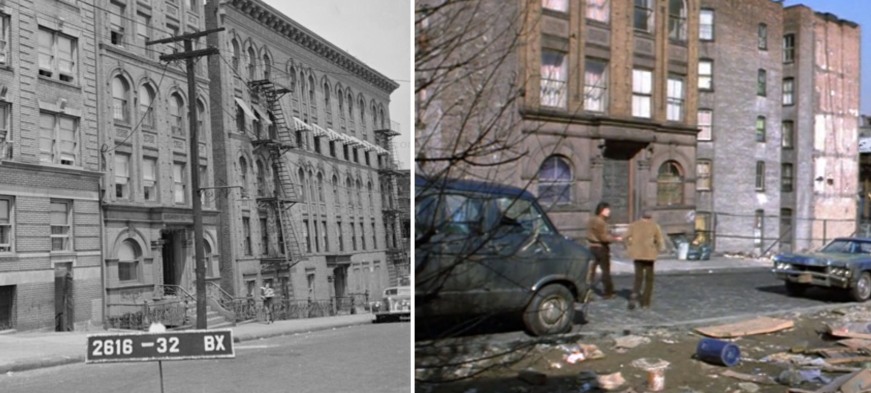
A few weeks later, Joe Conzo kindly wrote back and confirmed that the photo was taken on Eagle. Even though I’m sure I would’ve been able to figure out the location on my own eventually, his photograph definitely helped speed up the process (and offered a compelling behind-the-scenes look at the making of the film).
Rounding Up Johns and Hookers
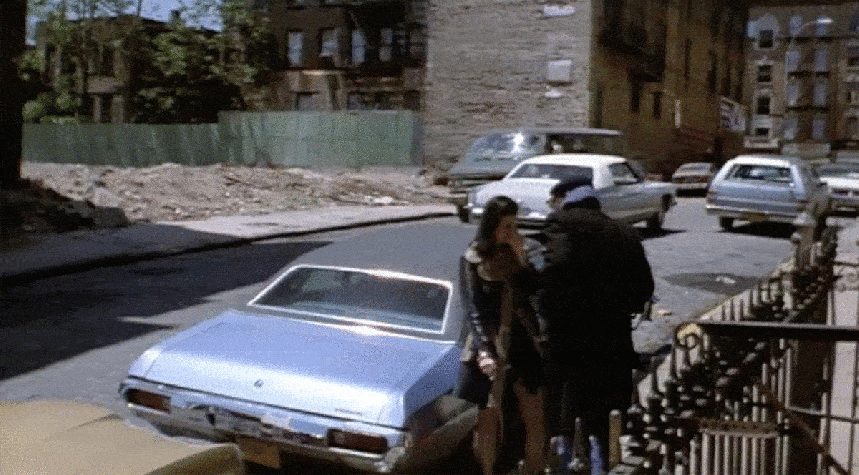
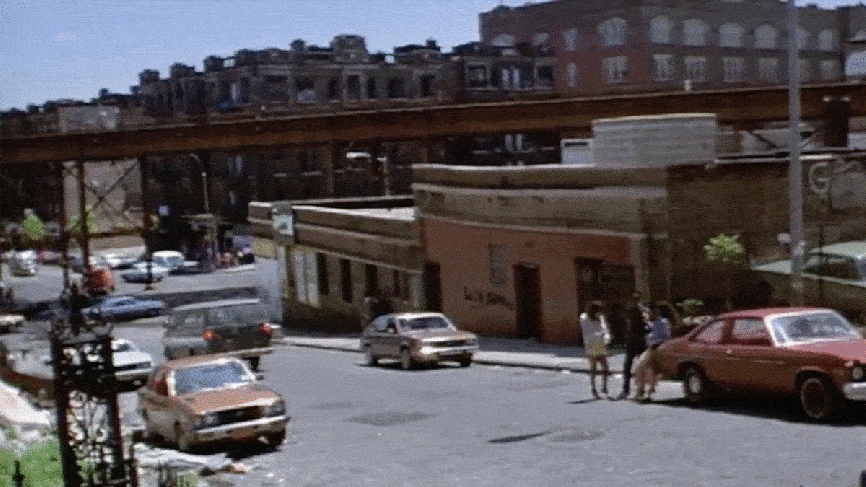
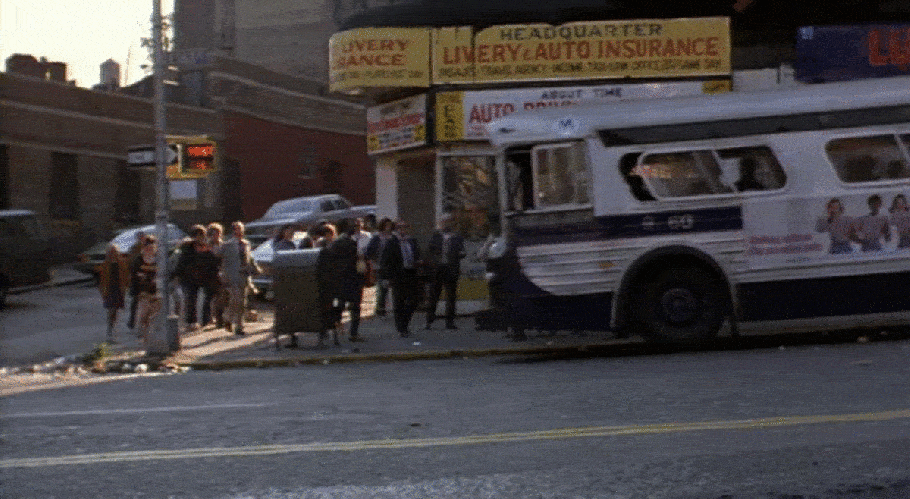
This was the first location I found after exhausting my IMDb message board source. The thing that inspired me to search for this location next was that somebody else on that message board made a general query as to the whereabouts of the scene “showing the hookers servicing the johns in their cars.”
At that point, I already knew that IMDb was going to discontinue the message boards at the beginning of the following year. So, I wanted to find this location fast in order that I could share it on the Fort Apache thread before it was permanently shut down.
I started this quest by looking for streets on an incline near a high elevated train. When that didn’t get me any results, I rechecked the scene for any other clues and noticed that when all the perpetrators are loaded onto the bus, you can see a sign for 163rd Street. Assuming this entire sequence was shot in the same general area, I just looked along 163rd until I found an intersection that looked like the one where the bus is stopped. I then checked the neighboring block, determining that it was where they filmed the hookers servicing the johns.
Even though a lot of the buildings have been replaced since 1980, I was able to spot a few extant buildings that matched the scene and became confident I found my first location from Fort Apache, the Bronx. I quickly posted my results on IMDb, but I never got a response from the user who made the request before the boards went down.
Angry Mob
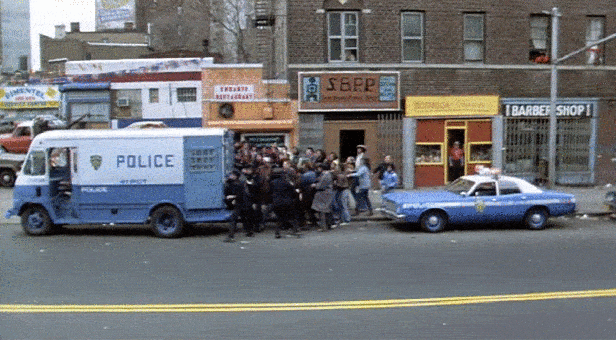
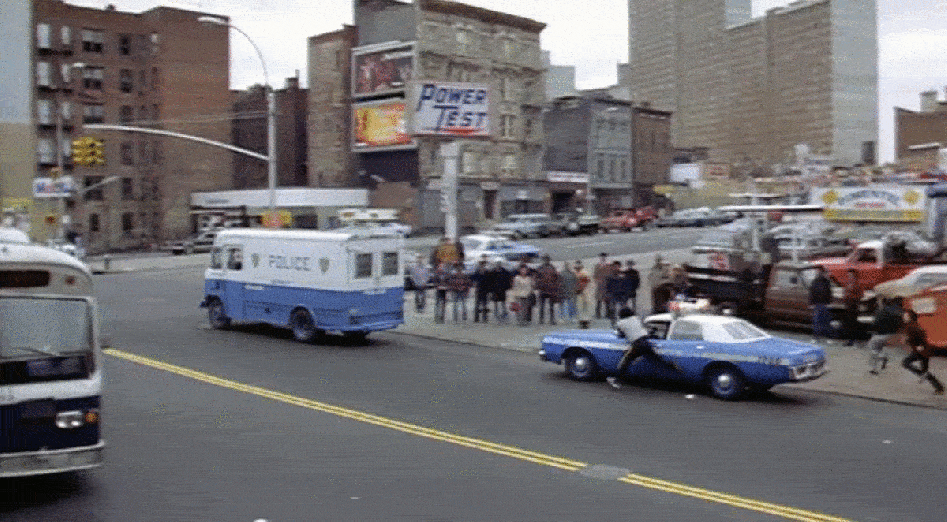
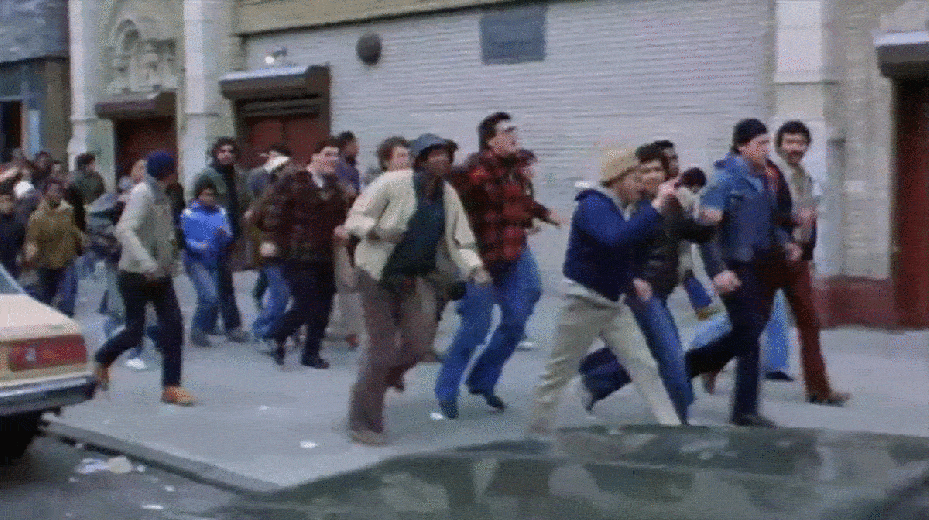
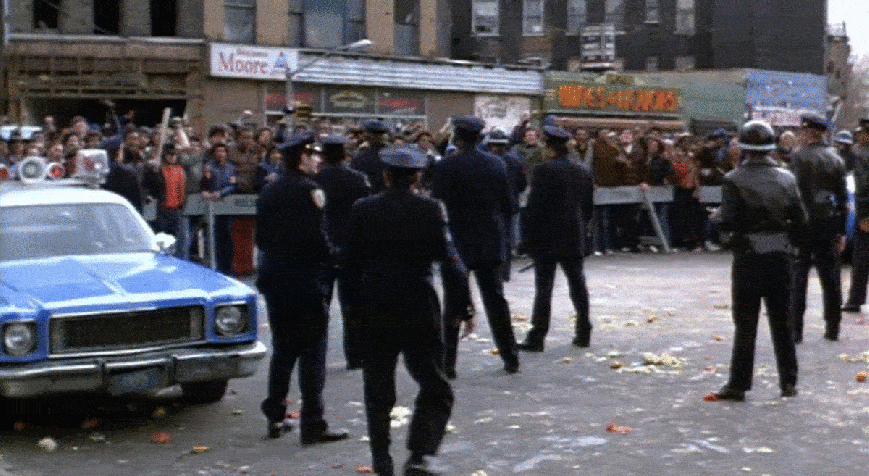

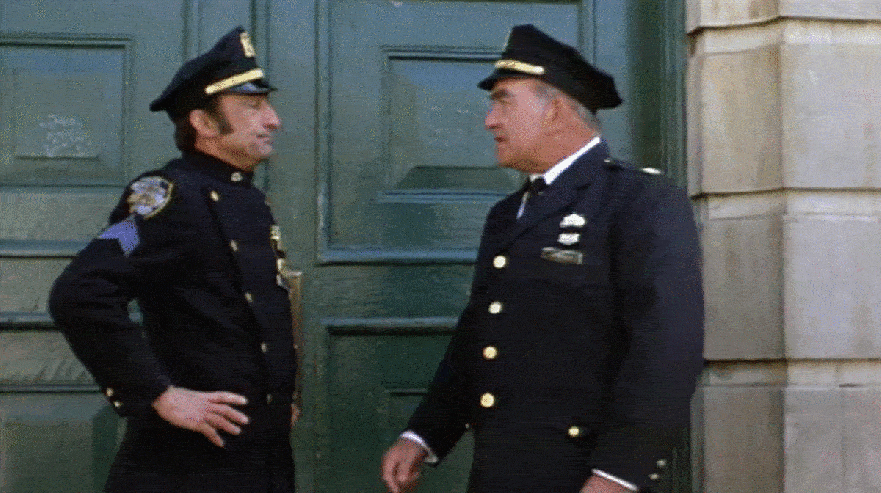
This extended sequence, which is really three different scenes, took place at three different locations, all of which were kind of connected to each other.
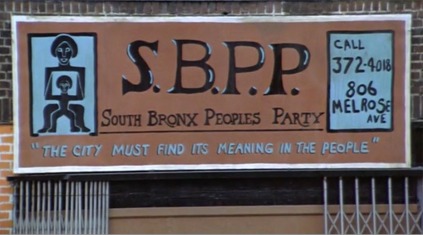 The first scene, where the “radical” activists are carted out of the “South Bronx People’s Party” headquarters, featured a street address above the door. While the address number was fake, I figured out the street name was correct once I recognized the intersection the paddy wagon drives through at the end of the scene.
The first scene, where the “radical” activists are carted out of the “South Bronx People’s Party” headquarters, featured a street address above the door. While the address number was fake, I figured out the street name was correct once I recognized the intersection the paddy wagon drives through at the end of the scene.
The reason I knew the intersection well is because, at the the time, it was on my main biking route to and from the city. In fact, whenever I was biking back home into the Bronx, the intersection featured in this scene was sort of a guidepost, letting me know that I was only a few more miles away from my apartment building.
The second scene was shot just a couple blocks away from the “S.B.P.P.” headquarters, so it wasn’t too difficult to find. And naturally, the last scene took place at the (already established) 42nd precinct on Washington Avenue, which was a couple more blocks away from the previous scene. So, this long sequence made perfect geographical sense.
Meeting the Kids
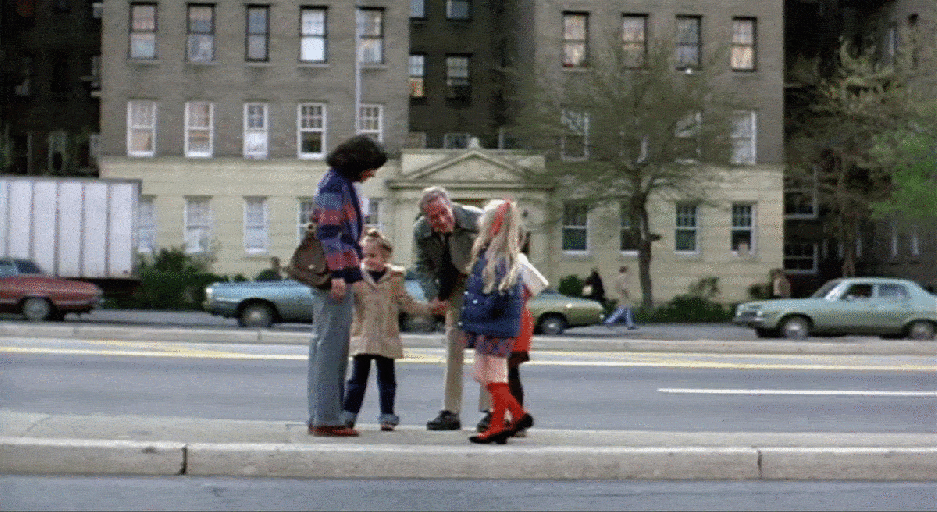
With the median strip running down the street, my first guess was that this quick scene was shot somewhere along Grand Concourse. So, I just virtually cruised up it in Google Street View, looking for the building that appeared behind the actors. Luckily, most of the buildings that were on the Grand Concourse in 1980 are still around today, and I was able to find a match fairly quickly.
A Deadly Fire
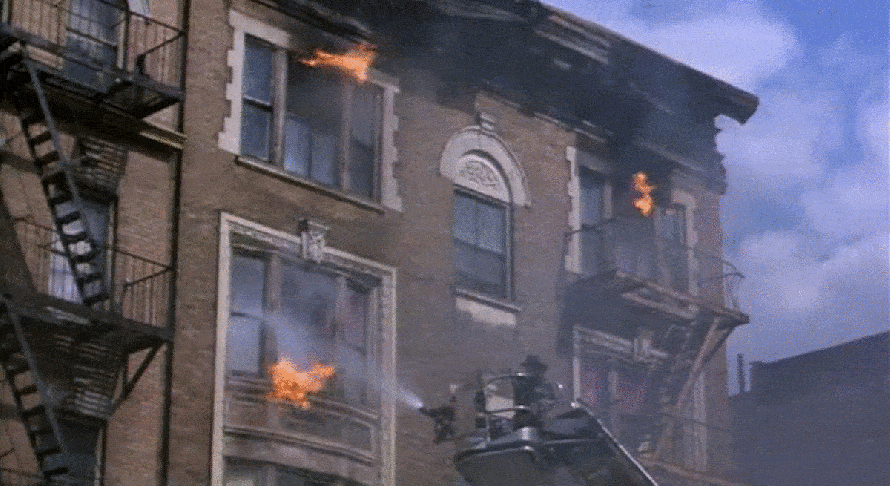
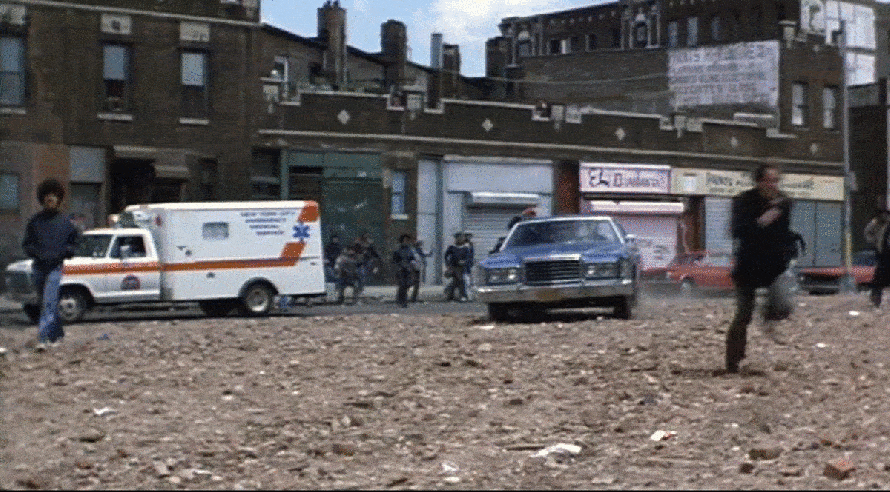
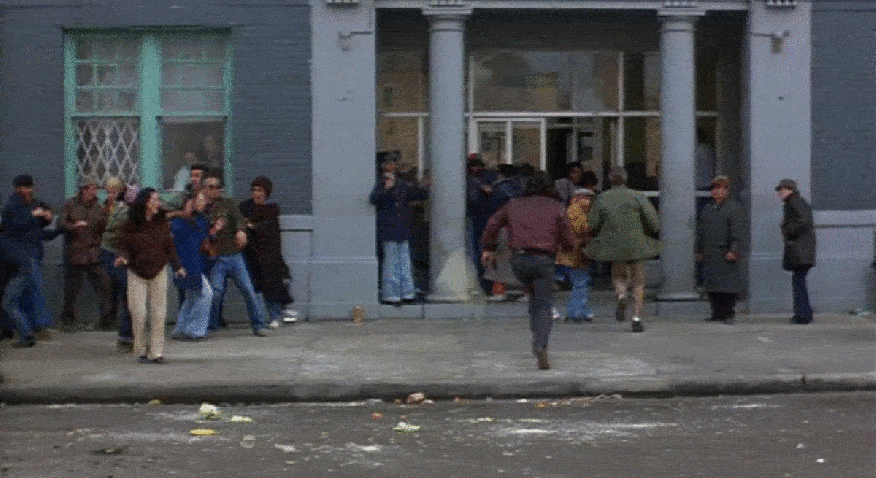
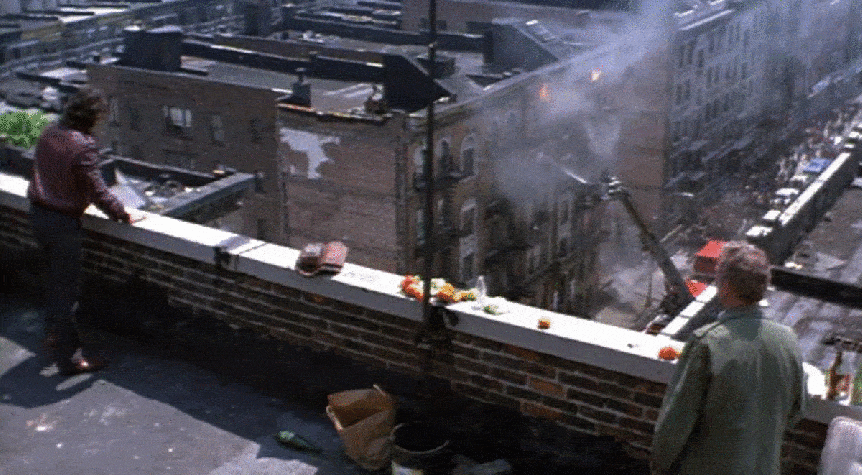
I could tell that this pivotal sequence was shot in the same general area that was shown in the opening credits of this film. So, I used those initial overhead shots, along with the panoramic views taken from the rooftop scene, to help me figure out the general vicinity of this sequence.
The two landmarks that stood out the most were a major highway (which I determined to be the Bruckner Expressway) and an elevated train track. Using those two landmarks, I was able to home in on this filming location within a 10-15 block radius. Then, I looked around that area in Google satellite view, trying to find rooftops that looked like the ones across the street from the roof Murphy and Corelli go on.
This process took a little longer than I expected, and I got caught up in a couple false leads. For example, at one point, I thought the sequence was shot on the nearby Southern Boulevard when I found a building that looked like a match to the one that was on fire. But after a while, I came to the conclusion that the geography just didn’t work — the building layout was not consistent with the film, and Southern Boulevard was too wide of a street. Also, upon closer inspection, I could tell that the building on Southern was slightly different from the ones in the film.
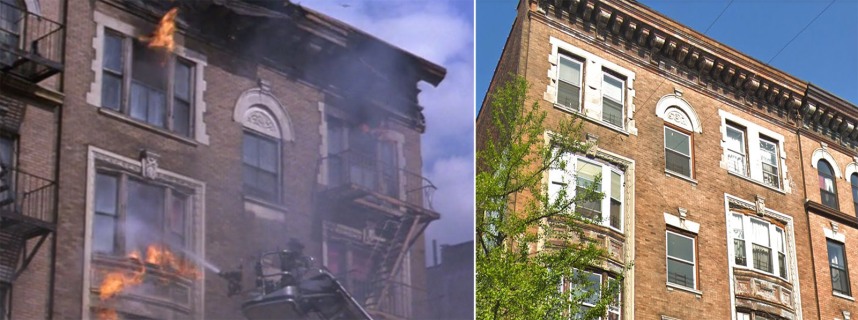
Eventually, I found another set of buildings that looked promising on Hoe Avenue, which unlike Southern Boulevard, was a more appropriate-looking street. While a lot of the buildings on the block had been torn down and replaced since 1980, I knew I found the right location as soon as I discovered the extant building that Murphy and Corelli go into, which still had the same columns flanking the front entrance.
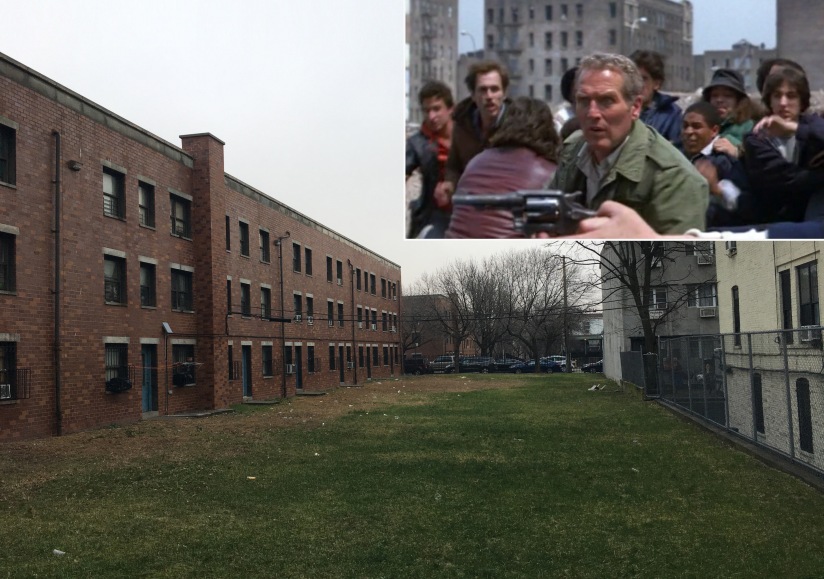
It might be noted that both the building that was on fire and the building where the kid gets thrown off the roof got torn down and were replaced in 1994 with a block of two-family homes.
Bar Fight
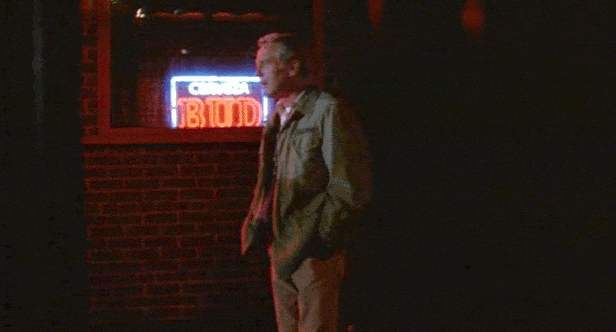
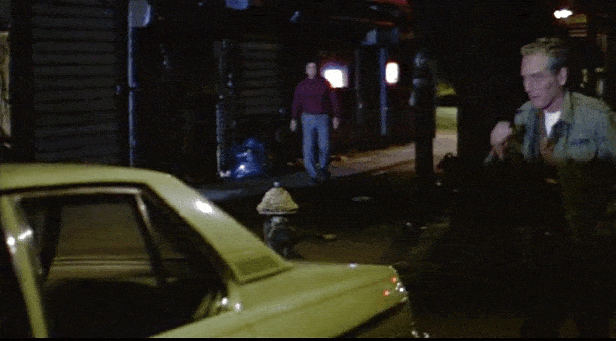

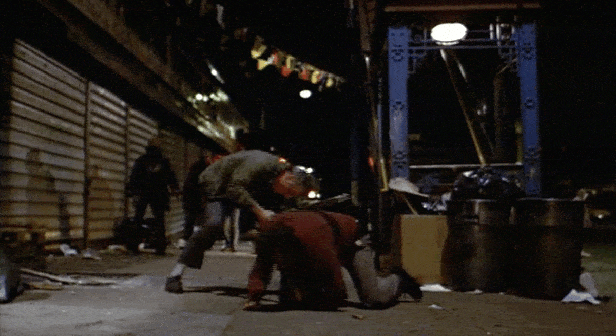
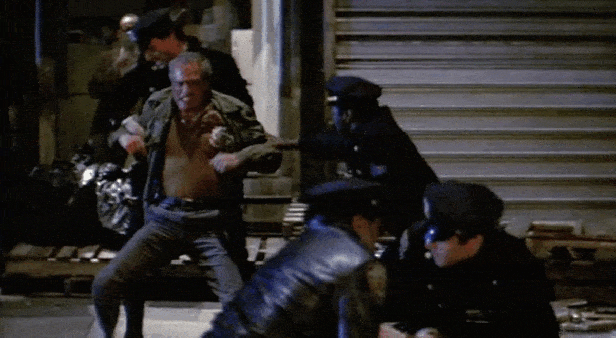
While all the bar exteriors were shot at Valencia on Westchester Avenue, the interiors were apparently shot at a place called the Schlitz Inn, a German bar and restaurant at 137th Street and Willow Avenue in the nearby Port Morris neighborhood.
According to a March 13th article in The New York Times, the third day of shooting was spent inside the single-story Schlitz Inn building, which sat in the shadow of the Bruckner Expressway. Apparently, the local tavern had a zestfully brash atmosphere —complete with plastic flowers, checkered tablecloths, dark wood paneling, and plenty of Schlitz on draft— that wasn’t present inside the Valencia over on Westchester.

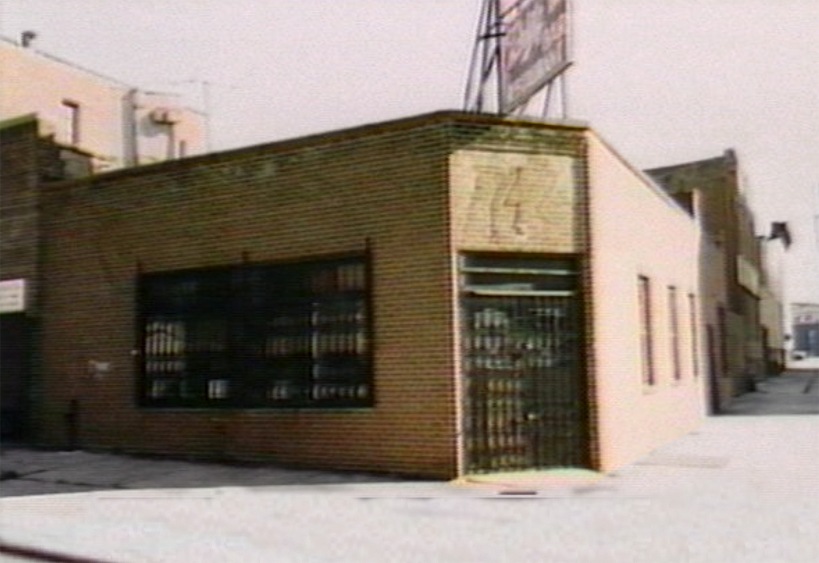
The fact that this small German establishment lasted into the 21st century is kind of amazing, considering how bleak and dangerous the neighborhood got once Robert Moses’ intrusive expressway cut through the land in 1953. Before that, the Schlitz Inn was your basic blue-collar joint, where exhausted working men could knock back a few beers while chewing on a bratwurst or a jägerschnitzel.
When interviewed about Fort Apache in the spring of 2000, Maria Wechsler, the resident cook, waitress and bouncer, only commented on the film’s star, Paul Newman. “He wasn’t my type,” she said, while on a mid-afternoon smoke break. ”He was too short. I wasn’t impressed.”
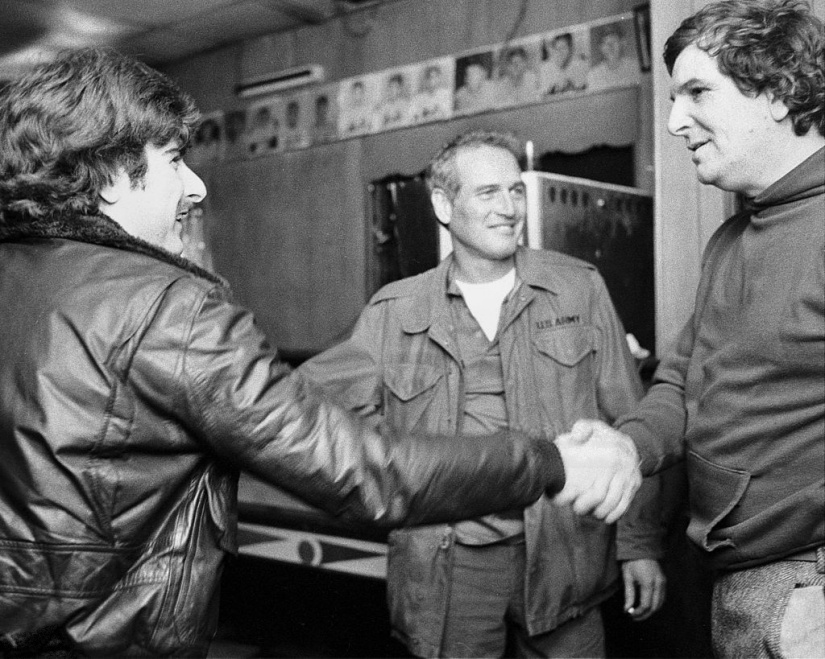
The Schlitz Inn finally closed its doors in 2005, and was taken over by an Ecuadorian restaurant, which lasted for a little over a decade. However for the last few years, the tiny brick building has apparently been empty — becoming a nondescript grey box in an unassuming nook of NYC.
Contemplating in the Park
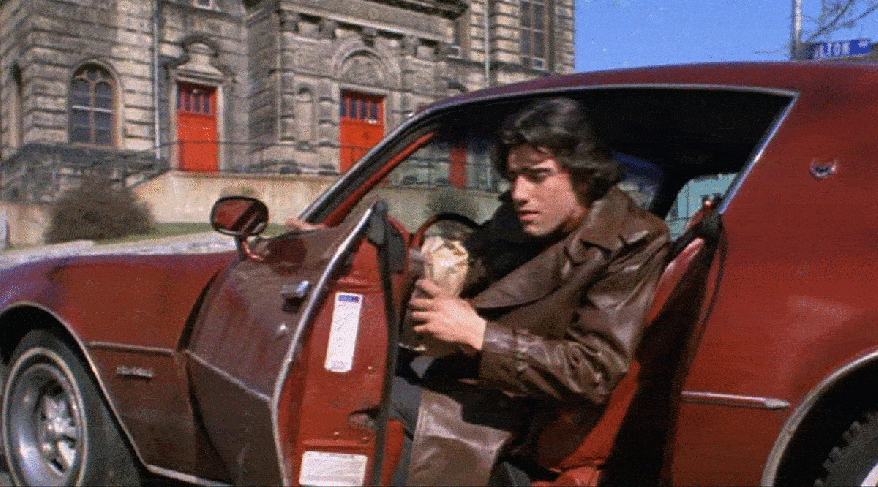
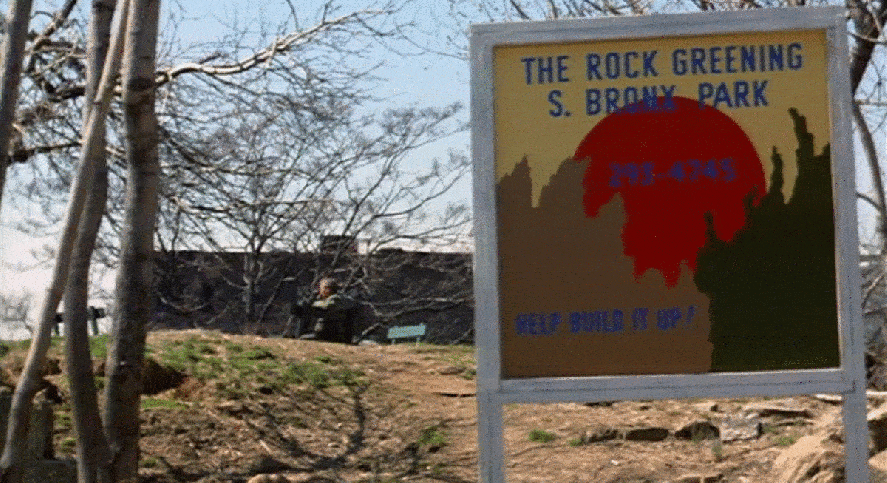
This location was also identified thanks to the IMDb message board, but it wasn’t from the former NYPD officer, it was from another user who used to live in the Bronx when he was a kid:
Well I can’t compete with the cop who gave precise locations. When they are sitting in the park with a church behind them, that is St Augustine’s. If you walked out of the park to the right you would hit the upper part of 3rd avenue and the 3rd Avenue El which was being demolished just about the time of the movie.
Even though it’s unclear in his post which park they shot in, after finding out where St Augustine’s church was, I was able to determine that they were in the tiny Estella Diggs Park near E 167 Street and Fulton Avenue.
Sadly, as I was identifying this location, I discovered that St. Augustine’s was closed by the Archdiocese in 2011, and the church was demolished in 2013. Since this film was one of the first I was investigating in my “NYC in Film” project, it was the first time I discovered a New York church being demolished. Up to that point, I always assumed that a church was one of the few edifices that was safe from demolition, and I was absolutely flabbergasted that St. Augustine’s was no longer around.
It’s a shame it had to go, because it definitely seemed like a commanding structure on an extraordinary piece of raised land. The one nice thing is that after the church came down, the land was used by a Catholic charity to put up an affordable, multi-family housing building. And the new 14-story residential tower is appropriated called, St. Augustine Apartments.
Lunch in the Park
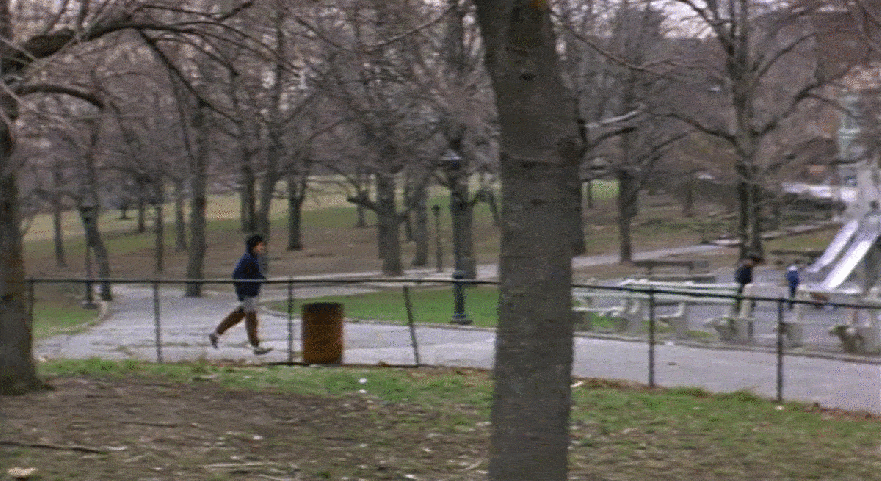
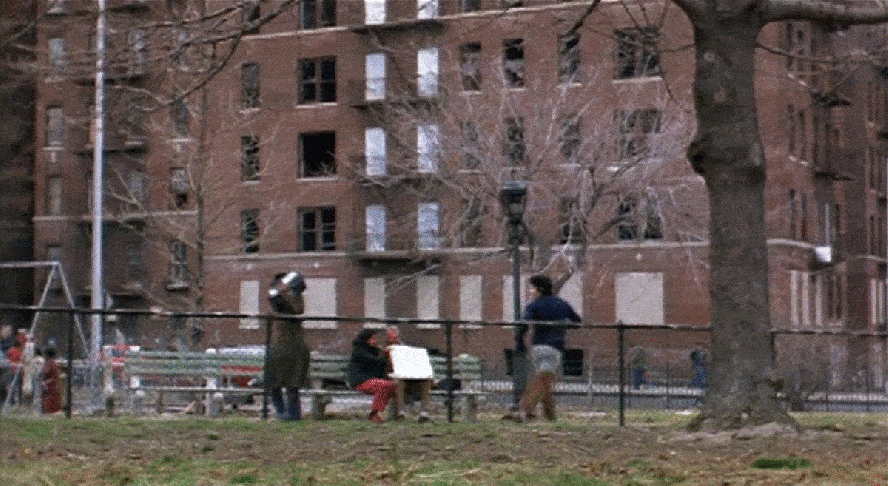
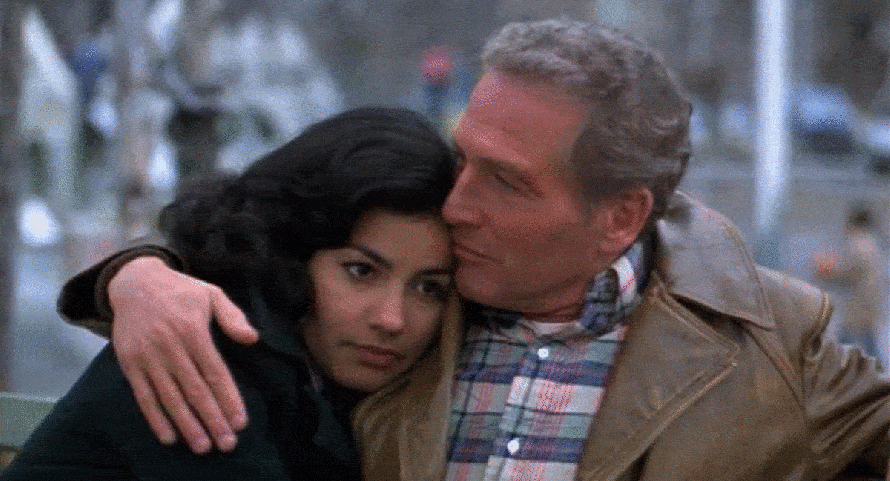
This location definitely took me longer to find than expected. Since there’s only so many decent-sized parks in the South Bronx, I figured I could find this location by simply going around the perimeter of every one in Google Street View, and spotting one of the buildings that appeared in the background of this scene.
Of course, the one potential snag in this method would be if the buildings have since been demolished. But whenever I encountered an obviously modern structure I would always stop and check out the layout of the park across from it and see if it matched the film.
Finally, it got to a point where I was pretty sure I had checked the perimeter of every major park in the South Bronx, but with nothing to show from it. So, I decided to try one more time. But instead of cruising around the perimeters in Google Street View, I decided to hover over the parks in Satellite View, trying to find potential buildings from above. And for some reason, this method worked and I was able to zero in on 887 Crotona Park North which matched the building across from the playground in this scene.
The Heroin Dealers
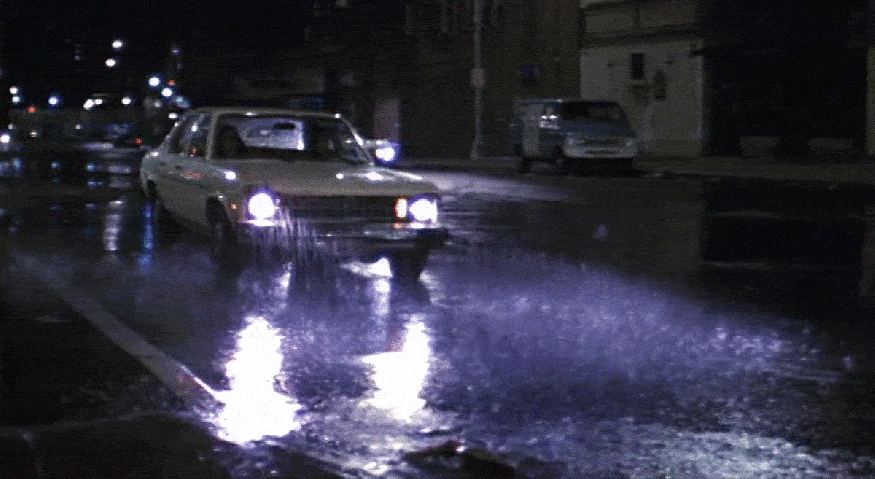
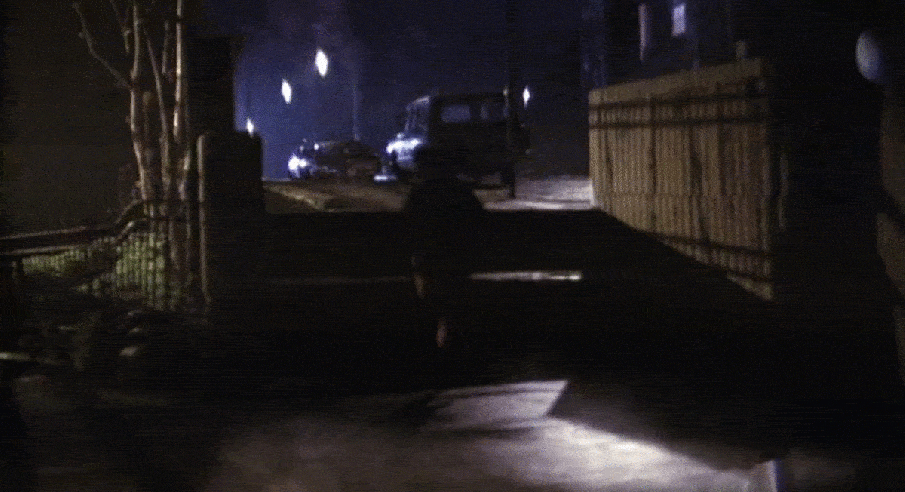
This location took me a while to figure out, but in retrospect, it should’ve been a quick find since it was very close to the police station and “rooftop jumper” building.
The main thing that helped me find it was the layout of the streets, which was clearly visible when the camera looks out of the drug dealers’ window, where one of the streets comes in at an acute angle. So, I just started looking through a map of the Bronx, trying to find similar intersections.
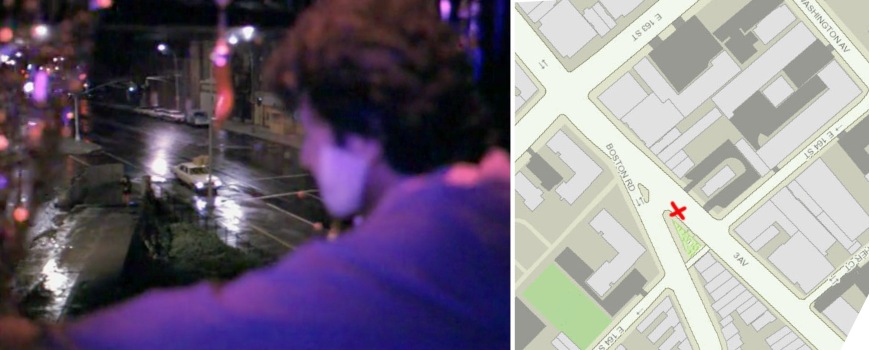
After looking at a couple intersections that fit the bill, I began leaning towards the one at Boston Road and Third Avenue because it had a small set of stairs similar to the ones in this scene. While not an exact match, I figured it was very plausible that the steps got replaced at some point since 1980.
The thing that really helped confirm this location was a small mid-block church that appeared across from the stairs on Third Avenue. When I checked out modern views of the location, I could see that there was a Gospel Hill Baptist Church at what I estimated to be the same spot, but the building looked different from what was in the film. However, after searching through the 1980s tax archives, I found a better match and became certain that this location was solved.
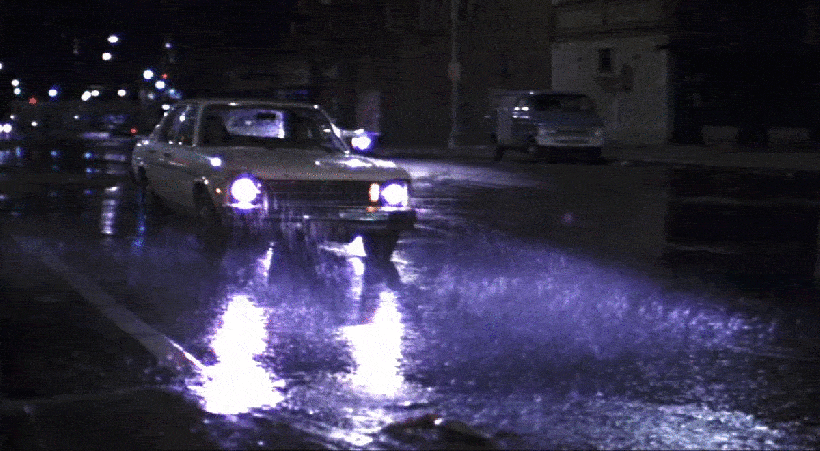
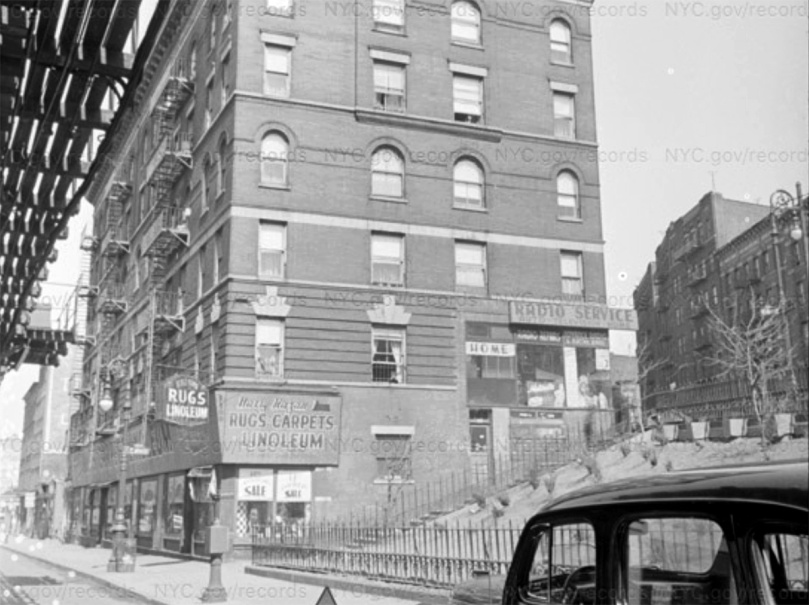
While the building where the drug dealers operated out of has since been torn down, most of the buildings along Third Avenue are still around, and it’s nice that there’s still a small set of stairs where this scene took place.
Isabella Overdoses
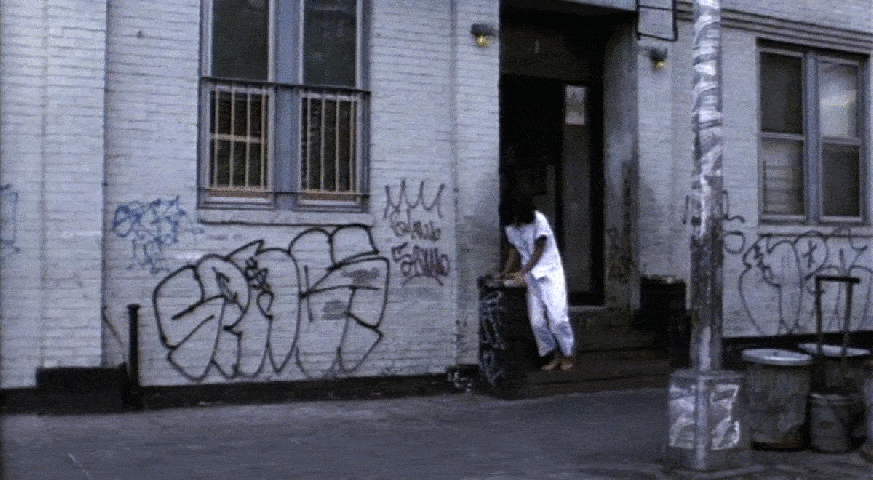
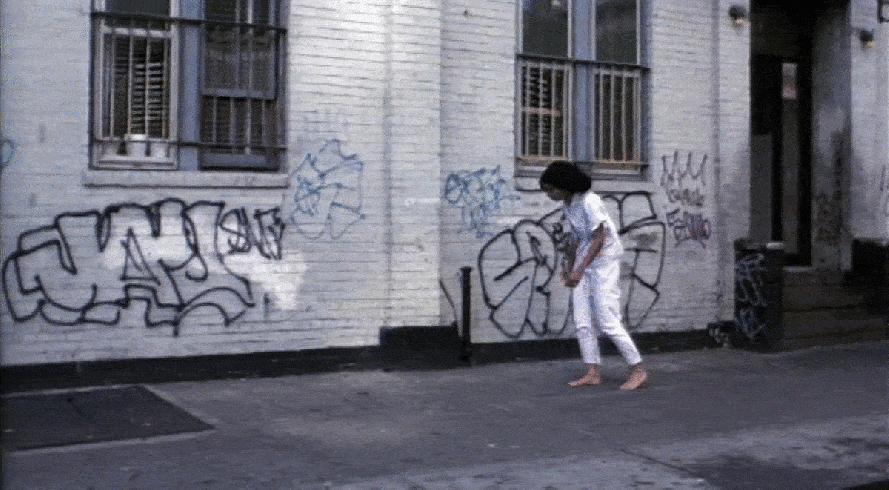
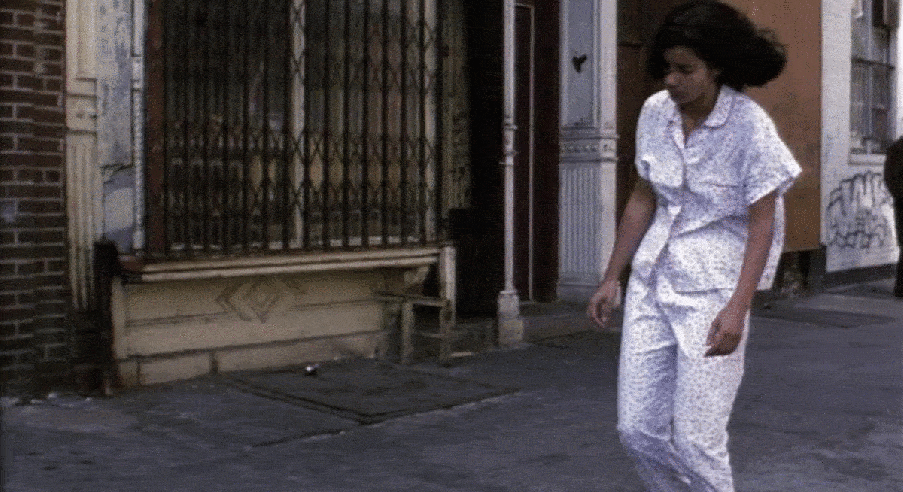
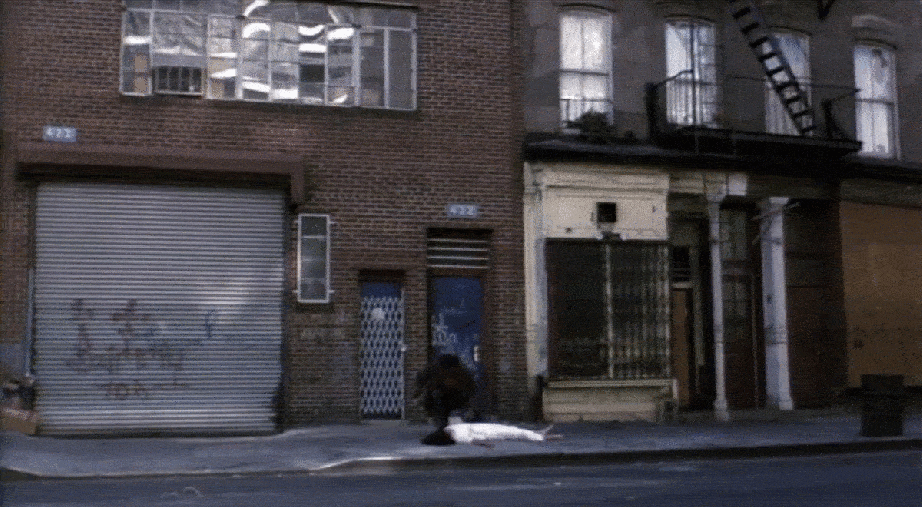
Blakeslee found this one, although I came very close to it as well.
What was frustrating about this scene was that it contained a completely readable address number of “422” on the garage where Isabella collapses. Thinking that this obvious clue would quickly lead me to this location, I became increasingly disappointed when I kept on hitting dead ends. I checked both the 1940s and 1980s tax archives for the Bronx, refining my search to buildings with a 422 address. And as a back-up, I even searched for buildings with a 420 and 424 address, but I never found anything promising.
Then, after discovering that they shot at least one scene in Manhattan (see the “hospital” entry below), I thought that the same could be true with this one. What originally sparked this idea was the small mid-block storefront Isabella stumbled past, which I thought looked like something that would be in Manhattan back then. But again, after searching through the 1940s tax photos, I came up with nothing.
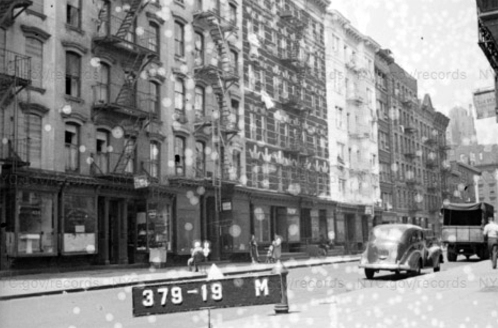
Meanwhile, Blakeslee, using a lot of the same logic as me, searched through the Manhattan tax archives for a matching building. But the one difference was he also checked the 1980s tax photos (which for some reason, I failed to do), where he found a picture of the garage on East 10th Street. Incredibly, I was investigating the very same block just a couple days earlier. But I rejected it because the building at no. 422 in 1940 didn’t match one in the film, and the building that’s there today also didn’t match it.
It seems as though the garage at 422 East 10th was one of those interesting cases where it was erected after the 1940s (which is why it didn’t show up in the 1940s tax archives), but was demolished only a couple decades later. So it had a very small window of existence.
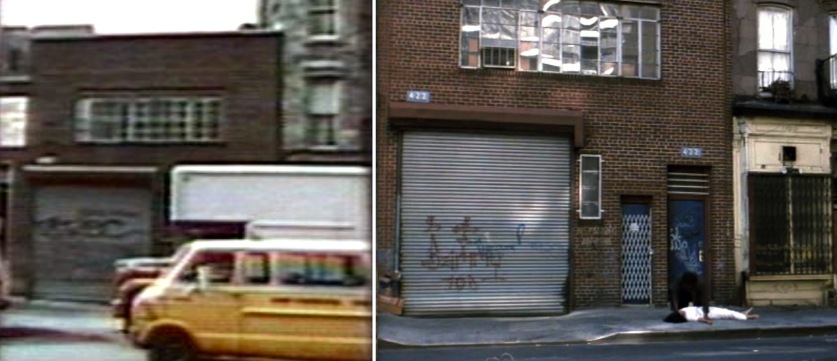
As I mentioned earlier, while it’s implied that Isabella is exiting her apartment building in this scene, it isn’t the same place she and Murphy went to in an earlier scene. Not sure why they used two different locations for her home, and why they went all the way down to the East Village for one of them. Perhaps because a drug overdose was a sensitive subject, production decided to shoot it outside of the Bronx where they could possibly control the environment better, as they already encountered some problems while filming in the northern borough.
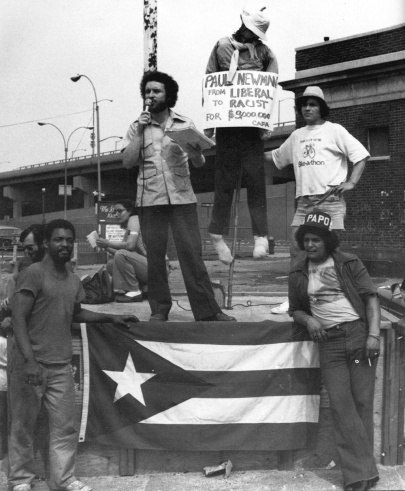
These problems came in the form of protests. As Fort Apache was being made, there were a number of Bronx residents who adamantly felt the film was racist, complaining that there weren’t any black or Latino characters with redeeming qualities in the story. Some of the crew members of Fort Apache later said that the number of protesters was greatly exaggerated, but it’s clear there was some serious controversy surrounding the film. In fact, even before the film went into production, a local coalition was formed called, CAFA, or Committee Against Fort Apache.
To help avoid demonstrations during filming, production didn’t publicize their shooting schedule in advance, making it difficult even for reporters and publicists to coordinate with the film team. But as production tried to strengthen public relations by hiring Bronx residents as extras and paying local property owners for use of their facilities, upcoming schedules were passed on to community activists through basic word-of-mouth. For example, CAFA figured out the shooting location for March 21st after getting notified that filmmakers offered certain shopkeepers $100 to keep their stores open until midnight.
During all of this, some of the people involved with the film felt obligated to defend their motives. Paul Newman, who had a long history with social issues, argued that the film would help shed some light on the problems being faced in the South Bronx. However, as negative publicity continued to mount, Newman, who was called “a money-hungry mongrel” and “a bigot for defending the movie,” decided to speak at a press conference. As he stood in a vacant lot on April 7, 1980, he stridently said, “It’s a tough movie.” But he vehemently denied that it was racist, emphasizing that, “it’s tough on whites, blacks, Puerto Ricans and on lousy white cops!”
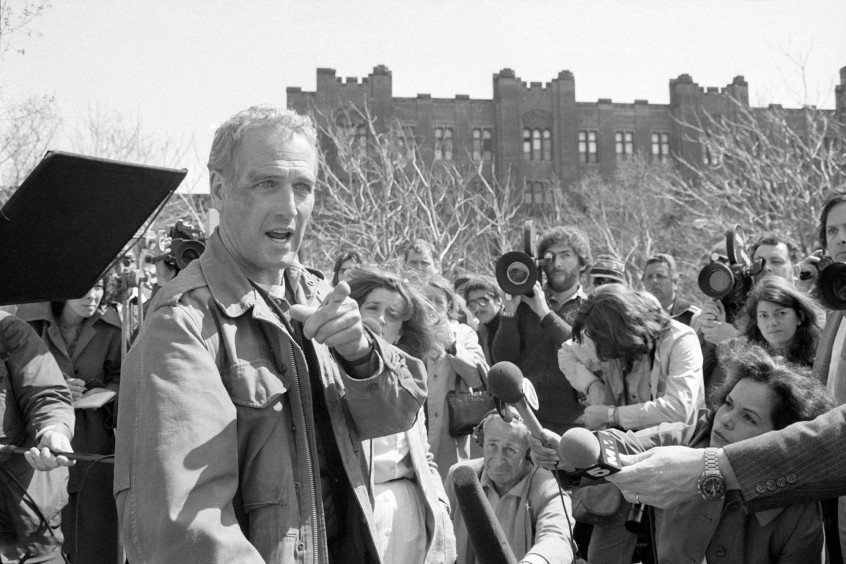
Ironically, some have said that all the protests and controversy surrounding Fort Apache, the Bronx actually helped boost ticket sales for what was arguably a mediocre cop movie.
While I think that some of the objections made by the protesters reflected a certain amount of oversensitivity, they did make some valid points. I think a slightly better-crafted screenplay could’ve shown the different qualities of life that was present in the Bronx, while still emphasizing the crime and devastation faced by NYC cops.
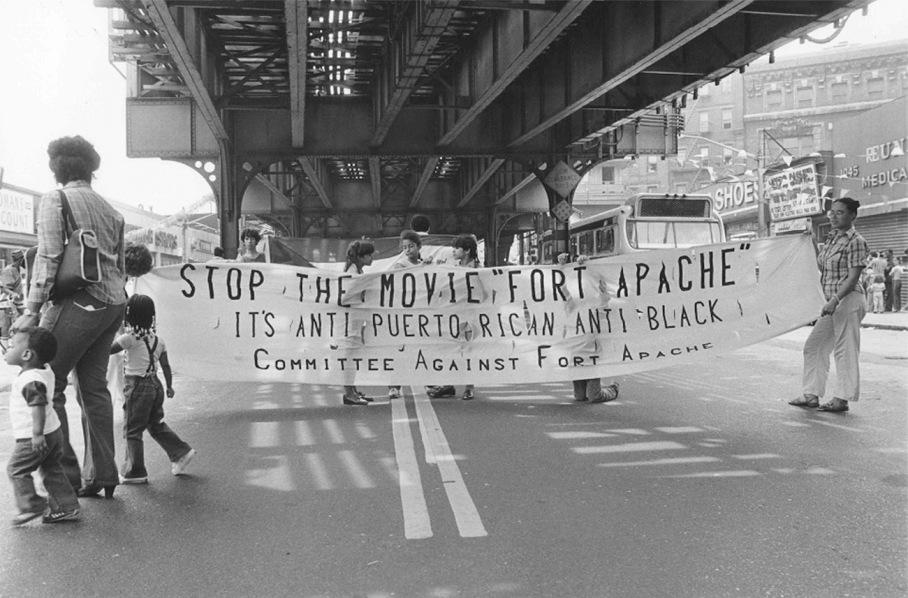
Even though not every white character is completely virtuous (the best example being the brutish Morgan, played by Danny Aiello), pretty much every non-white character is deeply flawed, depicted either as a heartless criminal or a hapless victim. What really stood out for me was the Isabella character. The writers, for some reason, decided to make the most positive and appealing minority character in the film, a junkie who overdoses and dies at the end.
To be clear, I’m not a big fan of whitewashing a story just to be politically correct, but I really saw no purpose of making Isabella a heroin addict and killing her off at the end. I think the writers used her death as a way to advance the Murphy character, where he’s finally pushed into deciding to inform on his fellow officer. But I think there could’ve been other ways to get him to that point, for example, having Isabella convince him on an intellectual and/or emotional level.
Anyway, I always thought it felt like sloppy writing to me… but what do I know? I’m barely able to write this blog.
Racing to Hospital
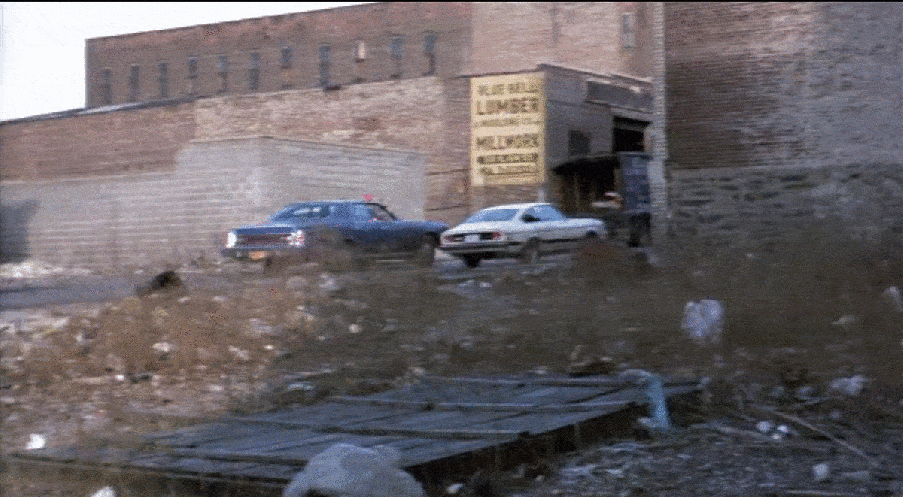
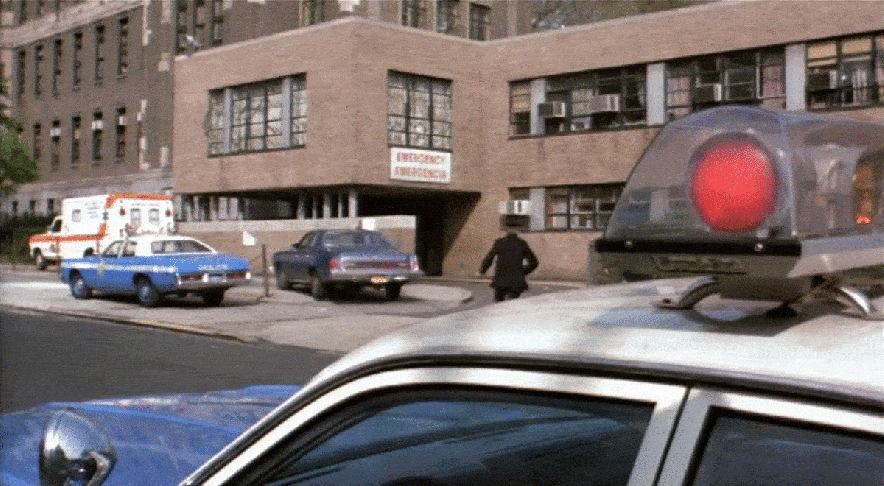
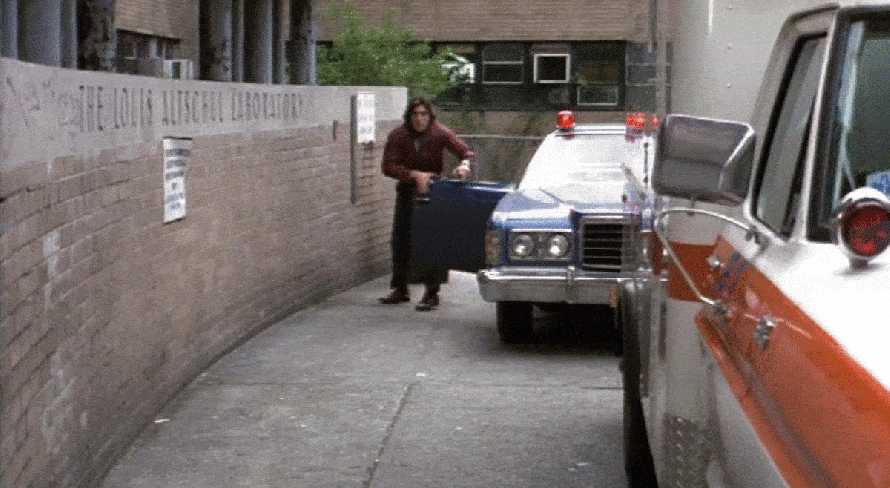
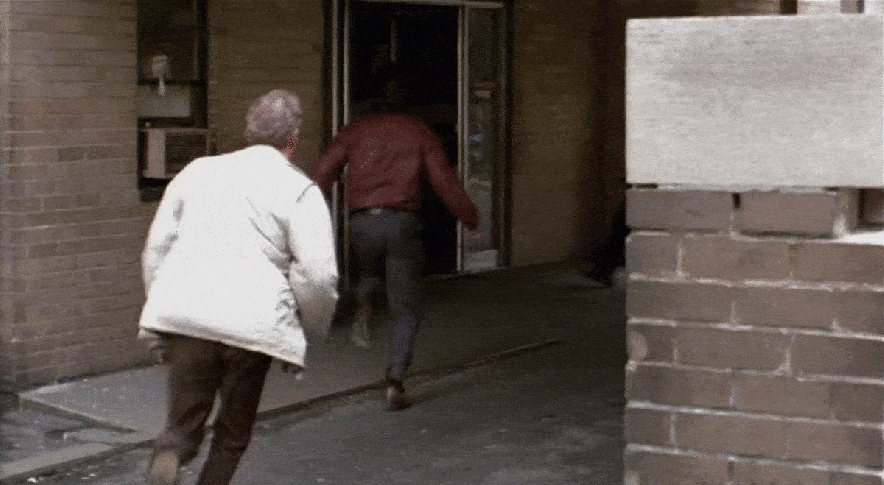
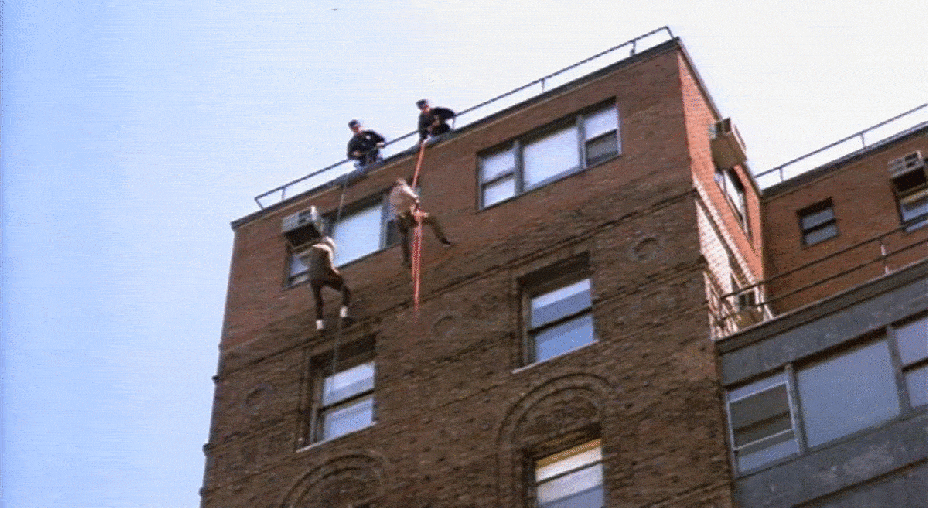
I figured out the first part of this sequence where Murphy drives to the hospital by doing an online search for “Blue Bell Lumber & Moulding,” whose name was painted on the side of one of the buildings. The search ended up being quite easy, especially since the company appears to still be in business, operating out of the same building at 501 E 164th Street.
As to the hospital building, like I mentioned before, it took me a while to realize that it was the same one that appeared earlier in the movie, but that they just used another entrance. The clue that eventually helped me realize that it was shot at Fulton Avenue was the etched-in letters that read, “Louis Altschul Laboratory Building,” which was a two-story wing added to the hospital in 1955.
However, when I went to the Fulton Avenue location to take some modern pictures, I kept getting confused as to where they shot the scenes of the police on the roof and scaling the side of the building. Thinking they shot those scenes at another part of the building, I kept circling the block on my bike looking for a matching façade, but couldn’t find anything. Finally, I came to the conclusion that production must have used a completely different location for those parts.
At this point of my research, I had assumed everything was shot in the Bronx (this was before I discovered the locations in Queens and the East Village), but after watching the rooftop scenes and comparing it to Google satellite views, I concluded that they had to have been somewhere in East Harlem. After that, I just looked around the neighborhood in Google Street View until I was able to find a few extant buildings on Madison Avenue that matched the ones in the film.
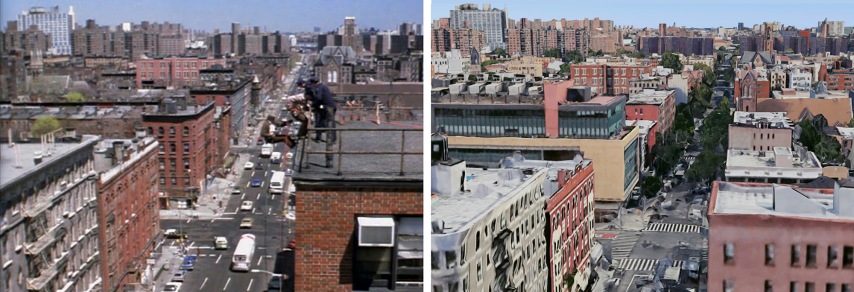
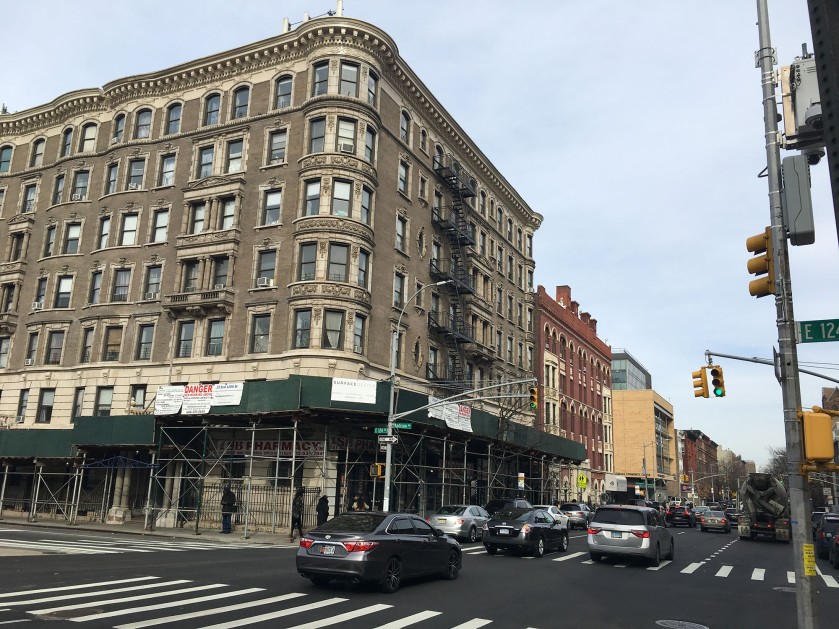
When these rooftop and scaling scenes were filmed, the building on Madison Avenue was home to North General Hospital, a private, not-for-profit, voluntary teaching facility. It was founded in 1979 to replace the Hospital for Joint Diseases (founded in 1905), which moved out of the East Harlem property earlier that year. At the time of its inception, North General was the only private hospital in Harlem, and was the only minority-run, voluntary teaching hospital in New York State.
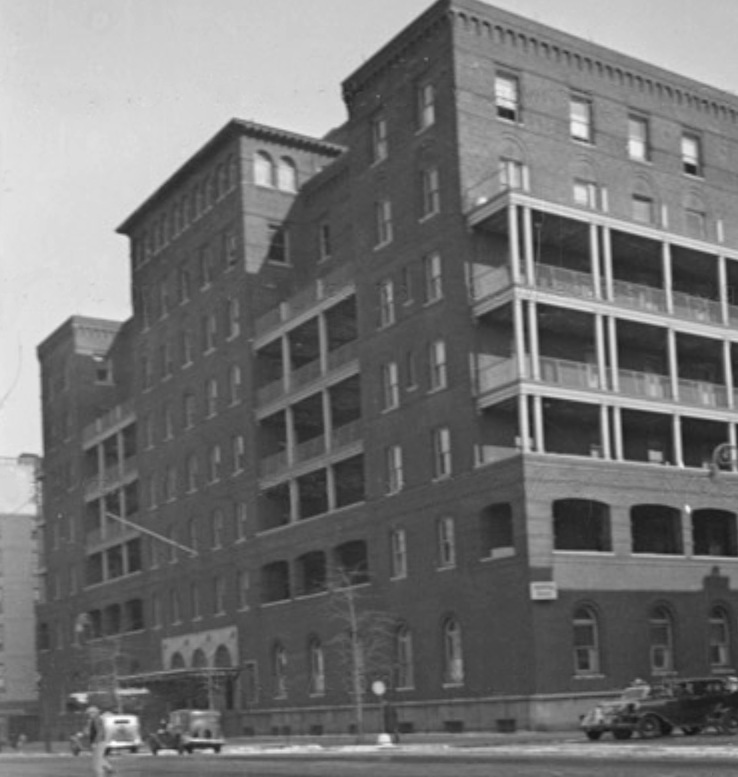
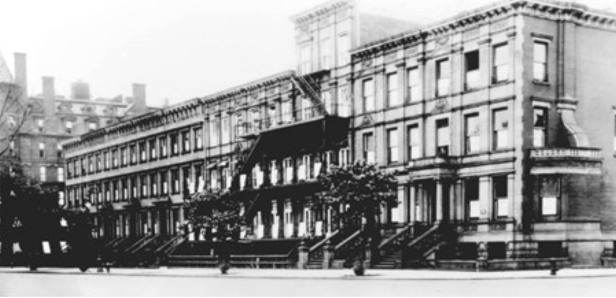
In 1997, after North General moved into its new facilities two blocks south, the building at 1919 Madison Avenue was replaced with Maple Plaza, an eight-story, HDFC housing development.
Murphy Depressed

Having already identified three different scenes shot near the elevated IRT above Westchester Avenue, I guessed that this quick scene was also shot somewhere along there. Turns out, it was very close to the “cop bar,” in fact, it was kitty-corner to it.
At first, I thought that getting a similar-looking modern picture of this location was going to be nearly impossible, since it was obviously shot from a rather high angle. But when I got to the location, I realized that this scene wasn’t shot from a crane or an inaccessible rooftop — it was actually shot from the stairs of the Intervale-163d Street elevated station, so it was easy to match the same angle from the film.
Interestingly, if things went a little differently in the late-1980s, there might not have been any stairs there for me to climb.
The story begins in the early morning hours of March 15th, 1989, when three men attempted to rob the token-booth at the Intervale-163d Street station. When the transit clerk didn’t respond fast enough, the men poured a flammable liquid around the booth and set the station on fire. In place since 1908, the concrete platforms and steel pillars were unharmed, but the wood mezzanine was badly damaged and the Transit Authority was forced to close the station.
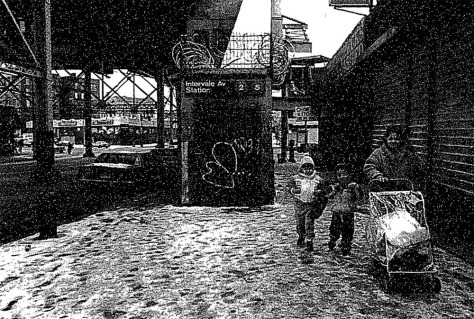
The issue then became whether to reopen it or not. The Intervale community, which was just starting to see a revitalization of the formally-barren neighborhood, was outraged that the Authority was considering making the closing permanent. Naturally, the issue came down to cost — $5.2 million to rebuild the Intervale-163d Street Station versus $2.1 million to demolish it.
The Authority’s rationale was that the Intervale station, which was ranked one of the least-used in the subway system, was only a five-minute walk from either of its neighboring stations. But community leaders pointed out that the added distance could be detrimental to some of their more vulnerable riders at night, when they’d have to contend with prostitutes and drug addicts who were still a common sight on Westchester Avenue during this time. Plus, back before there were MetroCards, Intervale was one of the few stations in the area where you could transfer between the uptown and downtown directions without having to use an additional token.
In the end, the Transit Authority deferred to the locals’ demands and rebuilt the station over a two and a half year period, reopening it on April 21, 1992. While simple in design and layout, the new station at Intervale served its purpose. As a local developer, Steven J. Fisher, said back in 1989 when the station’s fate was still uncertain, ”The people aren’t looking for Trump Tower at Intervale.”
The Final Chase


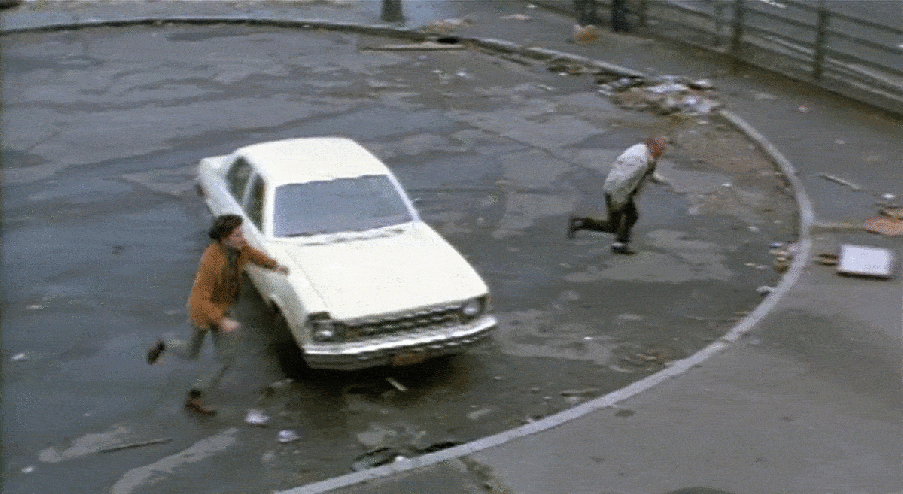

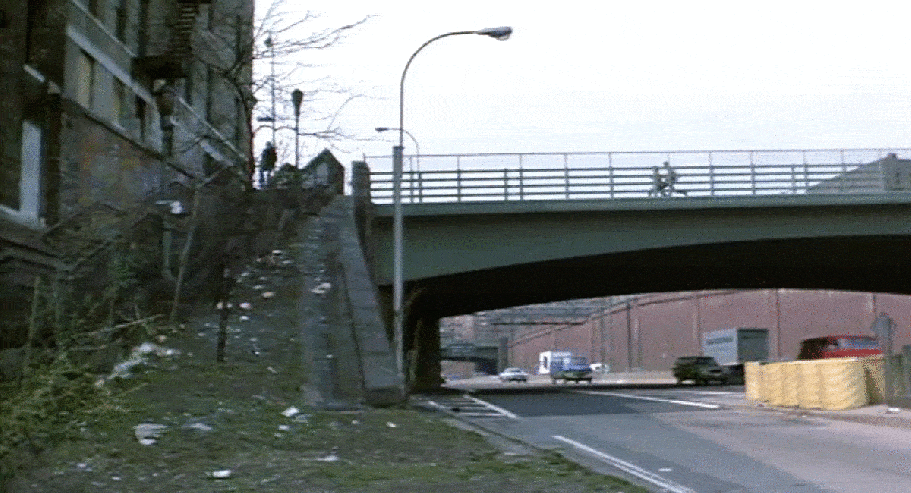
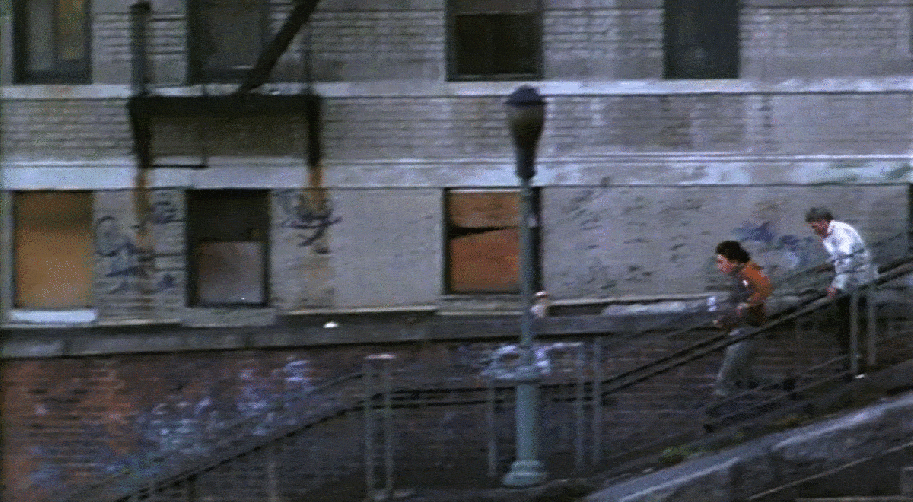
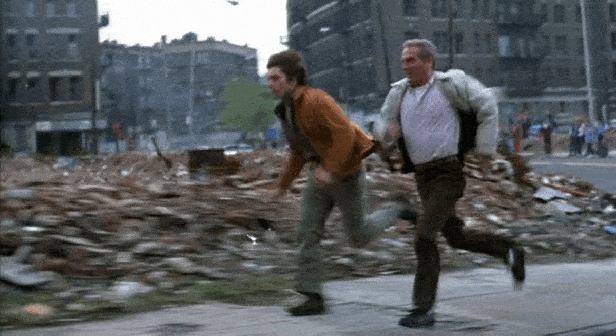
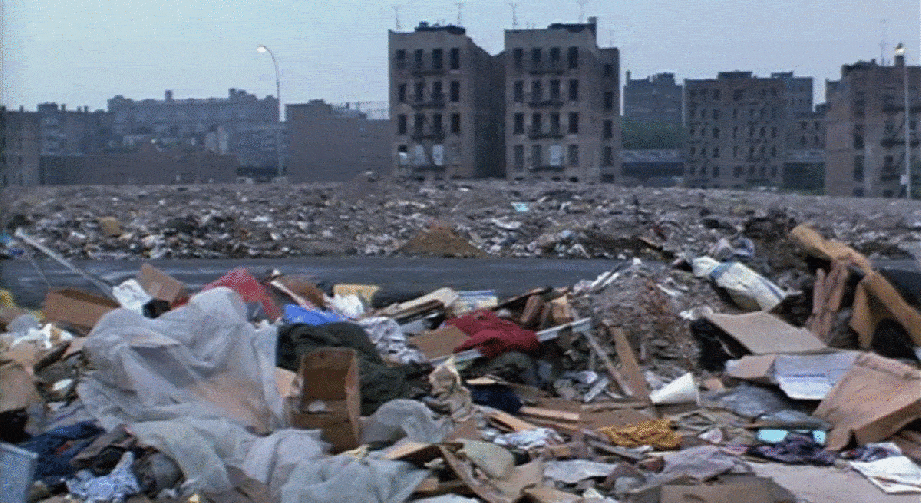
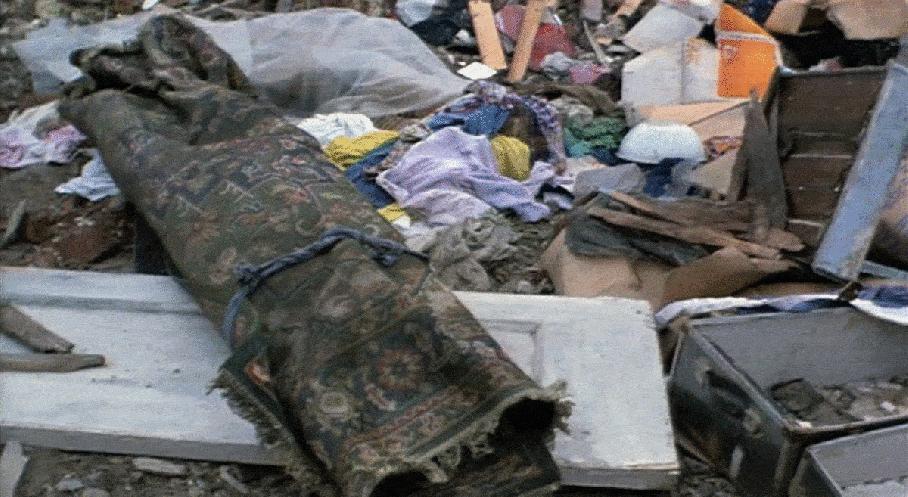
The middle part of this final chase sequence was identified on the IMDb message board, this time by a third user who was responding to the comments made by the former NYPD officer:
The ending was THE CROSS BRONX EXPRESSWAY BRIDGE, all the other areas you hit on the head. Basically they shot the whole film in the South Bronx which has changed dramatically from the film.
While a bit abstruse in his description, I knew what part of this sequence he was referring to, namely, when they run across a overpass above a highway. All I had to do was find out which overpass on the Cross Bronx Expressway was used.
Eventually I figured out they used the Clay Avenue overpass after spotting a set of stairs on the south side of the expressway and matching up a few of the nearby buildings. From there, I just reversed-engineered my way back to the beginning of the sequence and figured out that it started on Anthony Avenue.
After the characters run down the stairs by the expressway, it was clear that the geography jumped quite a bit to a more stark and ravaged neighborhood. While several movie websites indicated that the end of this sequence was shot in the then-infamous Charlotte Gardens neighborhood, none of them gave a specific address.
Of course, with most of the area covered in indistinguishable rubble, it wasn’t easy to find out where the action took place. I was able to figure out the approximate location of the rolled-up rug that supposedly had Pam Grier’s dead body in it, but I naturally couldn’t find the exact spot. Using the still-standing buildings in the distance and the general street layout, I was able to narrow down the location of the rug to within 10 or 20 yards.
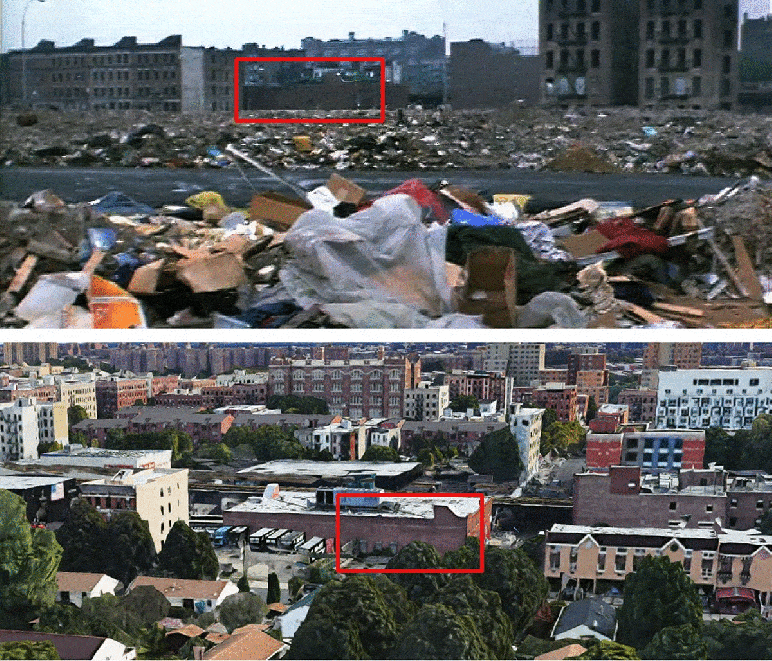
Right before the rug reveal, there was a quick shot of Murphy and Corelli running around a corner which appeared to had been filmed somewhere else. I actually only figured out that location as I was writing this article.
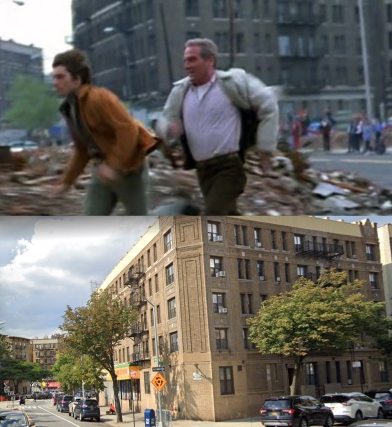
The big clues to work from were the unusual street layout, and what looked like an elevated train in the far background. After investigating nearly every street in Charlotte Gardens and coming up empty, I finally decided to widen my search. I eventually ended up in the nearby neighborhood of Woodstock where I spotted a street layout that seemed like it could be a match and was fairly close to an El train.
The thing that sealed the deal was when I was able to find several extant buildings that matched the ones in the film. I was amazed that the buildings had managed to survive since a lot of that area was razed during that time period.
It was during my research of this last scene that I first discovered the horror movie Wolfen also shot several scenes in the Bronx’s Charlotte Gardens, just a few months prior to when Fort Apache commenced filming.
Both films took advantage of what was a devastating sight. This group of bombed-out blocks epitomized the destruction that was happening in the South Bronx. It was also a popular way to make a political statement by local and national leaders, who used the Bronx as a symbol of urban decay.
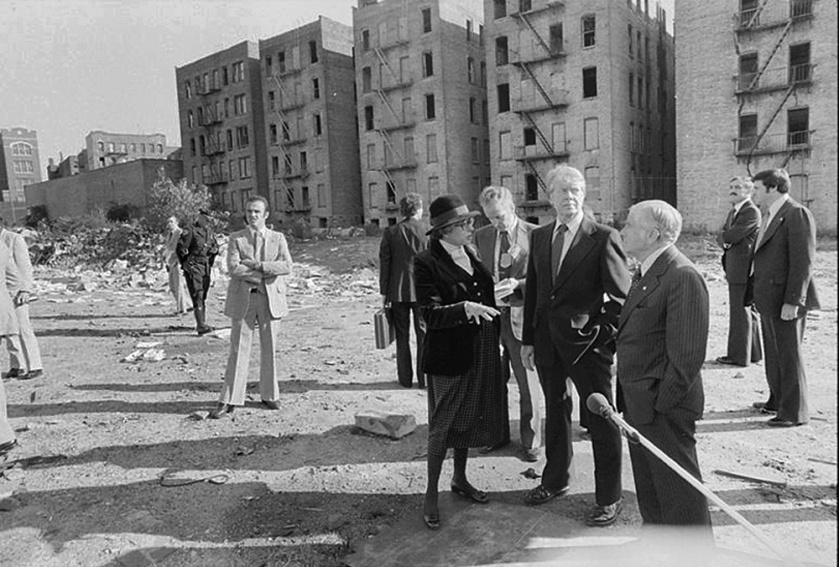
Both Ronald Reagan and Jimmy Carter came to this neighborhood to campaign on a promise of racial change and economic upswing, but neither was able to follow through. In fact, when Reagan visited the desolate region in 1980, his main point was that Carter hadn’t made any progress since his 1977 visit. But when he was challenged by a confrontational Bronx native, the usually-docile candidate snapped, “I can’t do a damn thing for ya if I don’t get elected!”
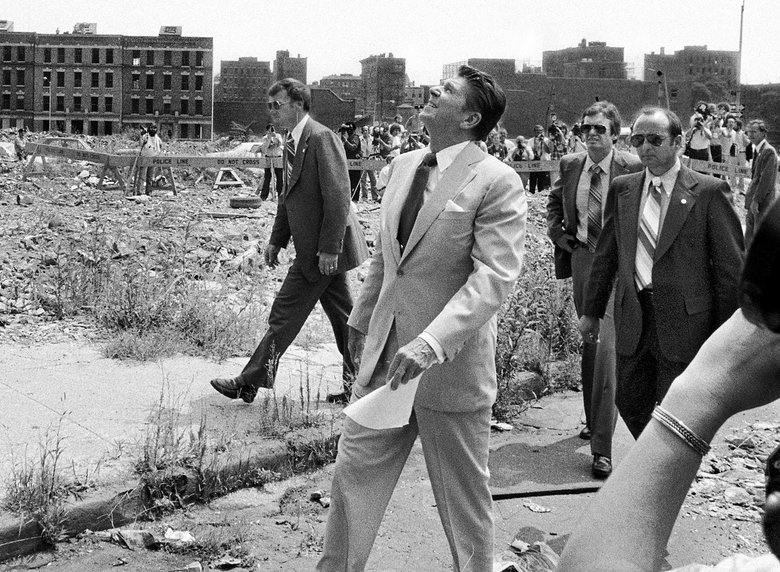
Four years later, Jesse Jackson made his own pilgrimage to Charlotte Street with similar campaign promises, followed by Bill Clinton, who came to the area over a decade later. By that point, the once-apocalyptic neighborhood was finally seeing positive change. The economy was getting better, and the streets, which once were lined with crumbling buildings and piles of debris, were starting to become lined with trees and suburban-style ranch houses, complete with lush yards and white-painted fences.


Whether the filmmakers of Fort Apache, the Bronx were truly trying to make a social statement about the struggles of urban life, or just trying to cash-in on a hot-button issue, it’s hard to know. But one thing is for sure — the movie is a valuable document of what the streets in this upper borough looked like over 40 years ago.
It’s a stark reminder that New York City is a place that is constantly changing.
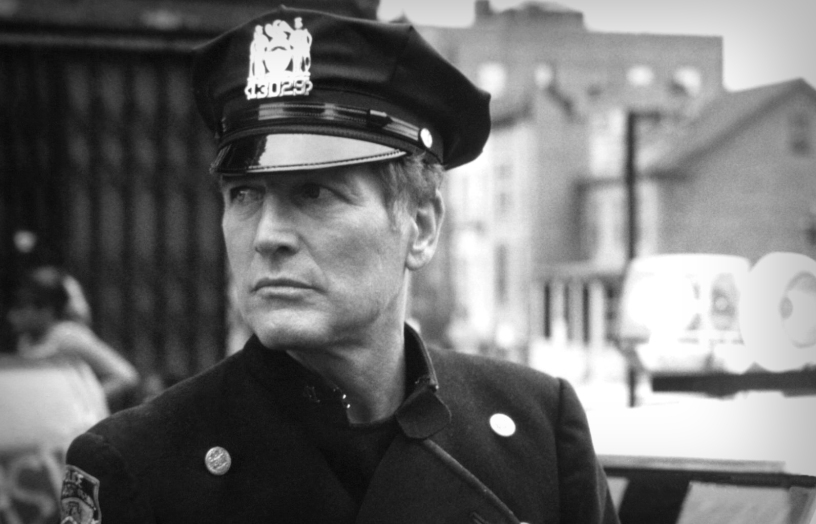
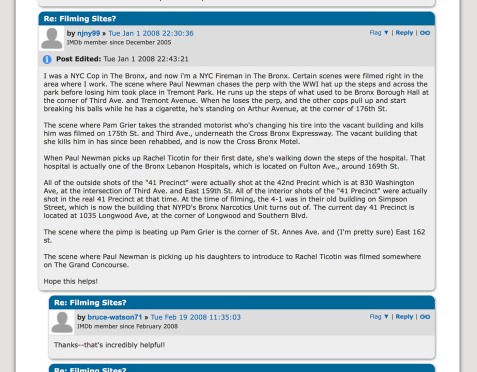
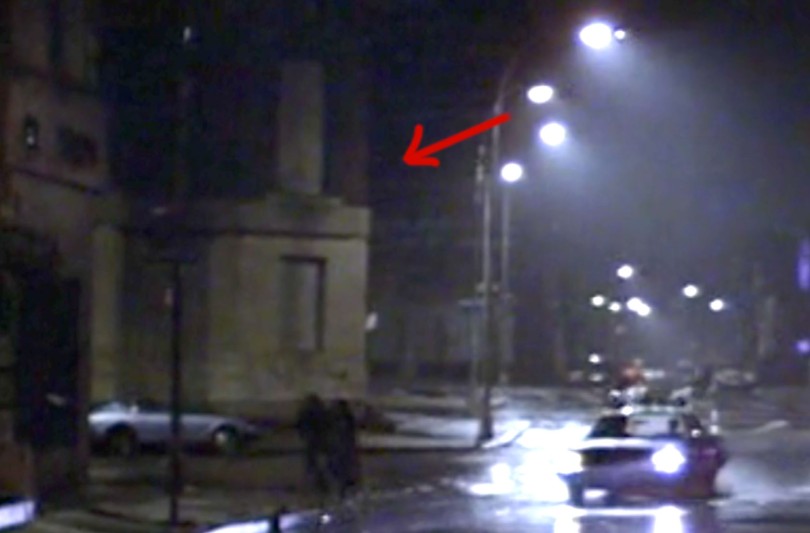
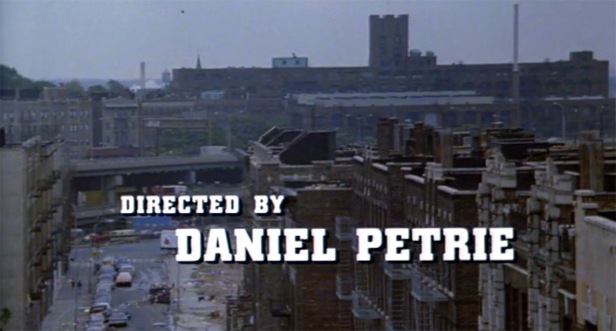
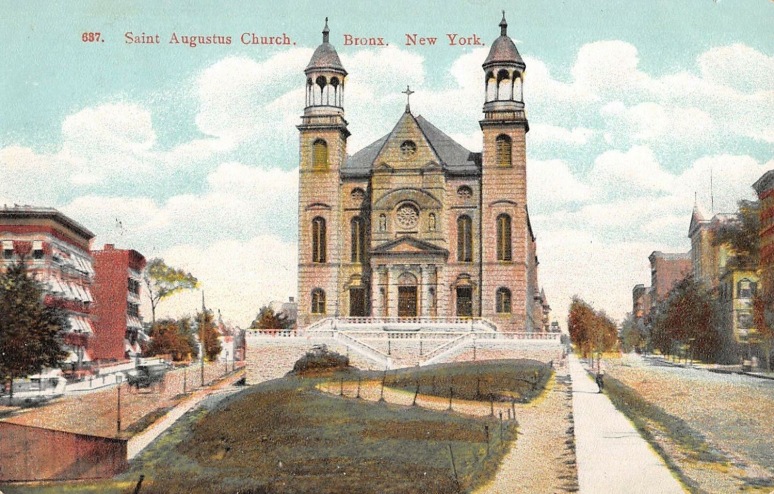
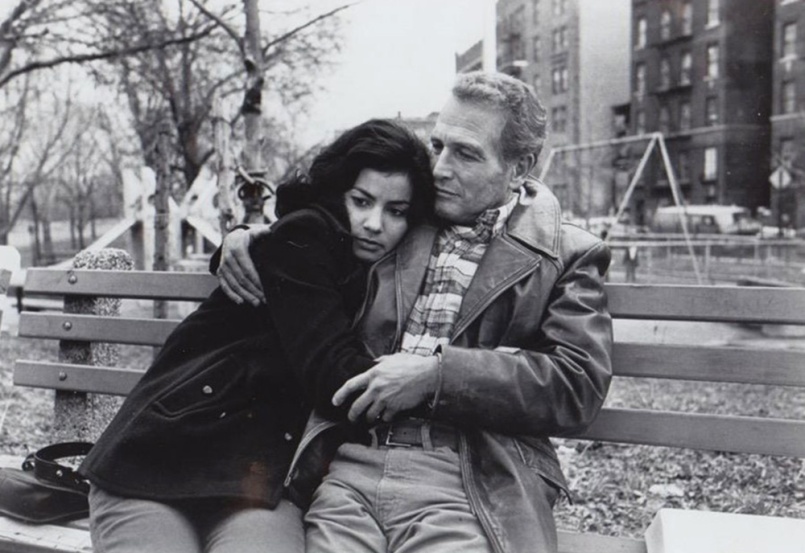
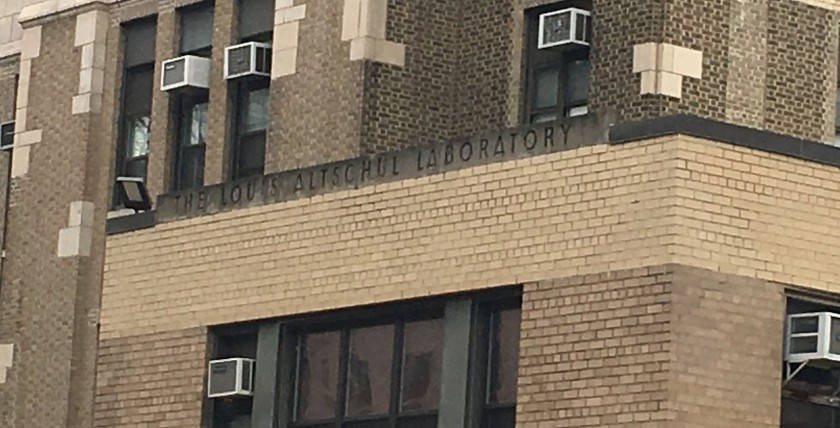
thank you very much for your interesting posts. Caption Connolly should be Captain. i still haven’t seen that movie and will have to try to get it from the local library altho i don’t like graphic violence. best wishes,
Carleton Hoffman,
San Francisco
LikeLike
This is amazing work! I know my comment won’t do it justice and I think you ought to be compensated for all the time and effort that went into solving this maze of riddles. In any case I think I should mention the existence of a tool (online mapping service) that perhaps was unknown to those who contributed in this search, a tool that throughout this article I thought could have helped you immensely. It’s called HistoricAerials[.]com, and it’s a website that contains historical overhead photographs of practically every piece of land in the country going as far back as the 1940’s. I subsequently spent a bit of time examining overhead images of the South Bronx borough using Historic Aerials and I have to say, the quality of images in their archive from the year 1980 is unbelievable. although these particular images are not in color I actually think Black & white is a better combination because it minimizes the amount of color on the map thus giving the viewer a sharper level of contrast which in turn makes it easier to discern locations in a search like this. I should also clarify that I am not at all benefiting from any mention of HistoricAerials. I found it while reading another user’s comment on Reddit and I thought it was such a useful tool, I was able to travel back in time within the neighborhood that I grew up in. A large park close to my home featured a massive community pool that was eventually removed before my time and I was completely unaware of its existence until I discovered HistoricAerials. I want to end this by saying that I really enjoy these movie location scavenger hunts, I’m sure this was painstaking work and I just want to say thank you for investing your energy in this. I am certainly looking forward to the next one !
LikeLike
I grew up in The Bronx and saw the movie at least 20 times. Many areas were not recognizable to me as I grew up in the West Farms/East Tremont section. But I really enjoyed the article. Thank you.
LikeLike
As a fan of the movie and overall of the Bronx, i’ve made my trips from the midwest looking, more by chance and luck than research, for these locations. Thank you for what seems hours of exhaustive work in finding these.
LikeLike